” I have always imagined that Paradise will be a kind of library” has once declared Jorge Luis Borges, the famous Argentinian writer.
Enclosing secrets as old as the world, mysterious and intriguing, these temples of knowledge offer much more than literary choices. They present marvellous architectures symbolising the developments and ideas of history and dazzle with such cachet.
From the oldest to the most futuristic, these spaces dedicated to reading were all built with the aim of being able to amaze, charm and above all inspire visitors. Well, mostly to charm and inspire me. And make me travel to unusual places.
As an avid reader myself, I love discovering new books, but most of all, I enjoy seeing those big shelves filled with books of all colours, languages and sizes. I imagine all the information and secrets they contain, and I start dreaming about all the stakes or the important people who have either studied or strolled through the alleys of these libraries or places of knowledge.
So when I travel to a country or a city, I always try to explore the libraries. They are full of mysteries and are often linked to the history of their country. You can also admire rare editions or take a break to read in an exceptional place. In short, a place where I always feel good.
Here is an overview of those I have discovered during my travels. Some of them are already the subject of an article, and you will be redirected to this one
Real Gabinete Português de Leitura in Rio de Janeiro
The Royal Cabinet, in neo-Manuelan style (inspired by many Portuguese religious buildings, especially the façade of the St. Jerome’s Monastery in Lisbon), is the work of the Portuguese architect Rafael Da Silva e Castro and was built in 1837.
The origin of this respect for Portuguese culture dates back to 14 May 1837 when a group of 43 Portuguese emigrants decided to create a place dedicated to the knowledge of Portuguese culture and to give the residents of the new country called Brazil (which had become independent some fifteen years earlier) a glimpse of what the Portuguese-speaking community had to offer the world. Their project became reality with the opening of the Real Gabinete Português de Leitura, some fifty years after the idea was first put forward.
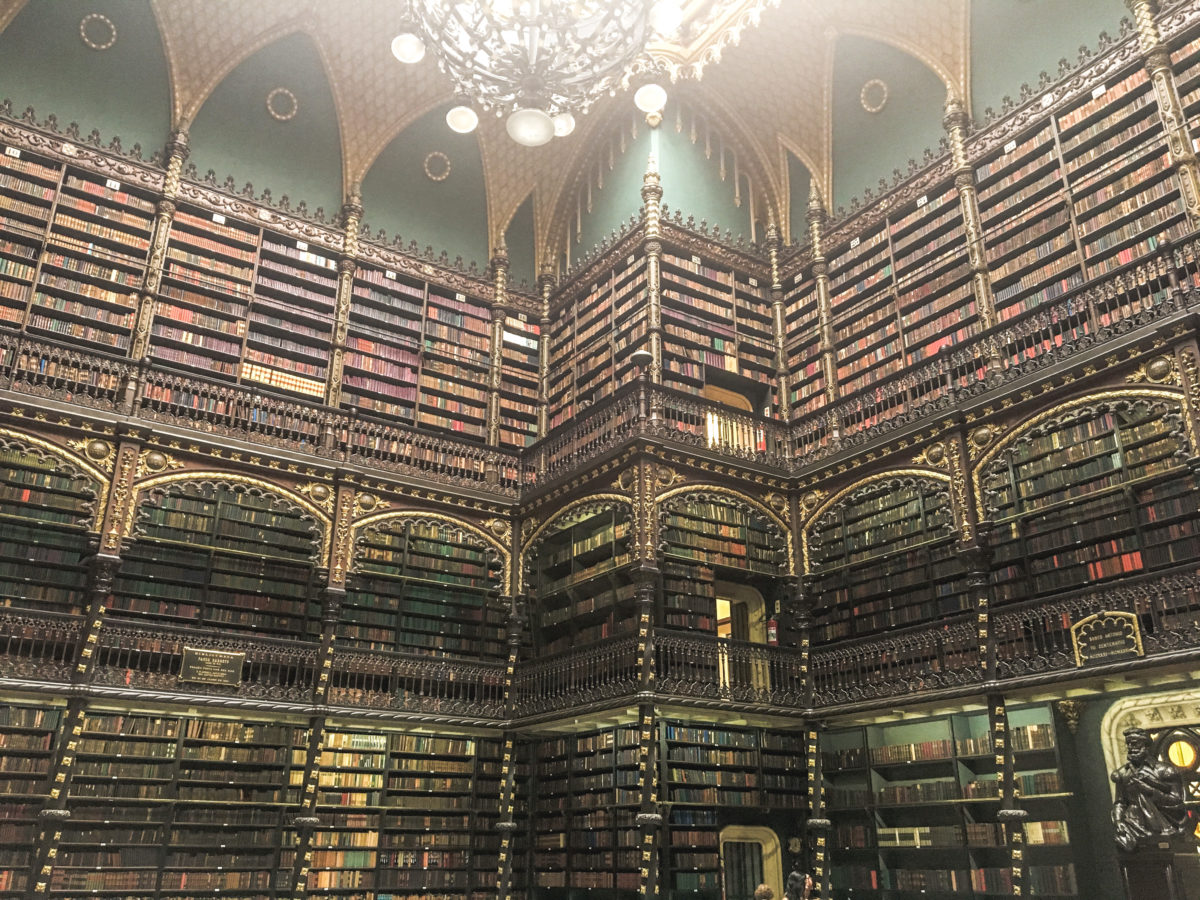
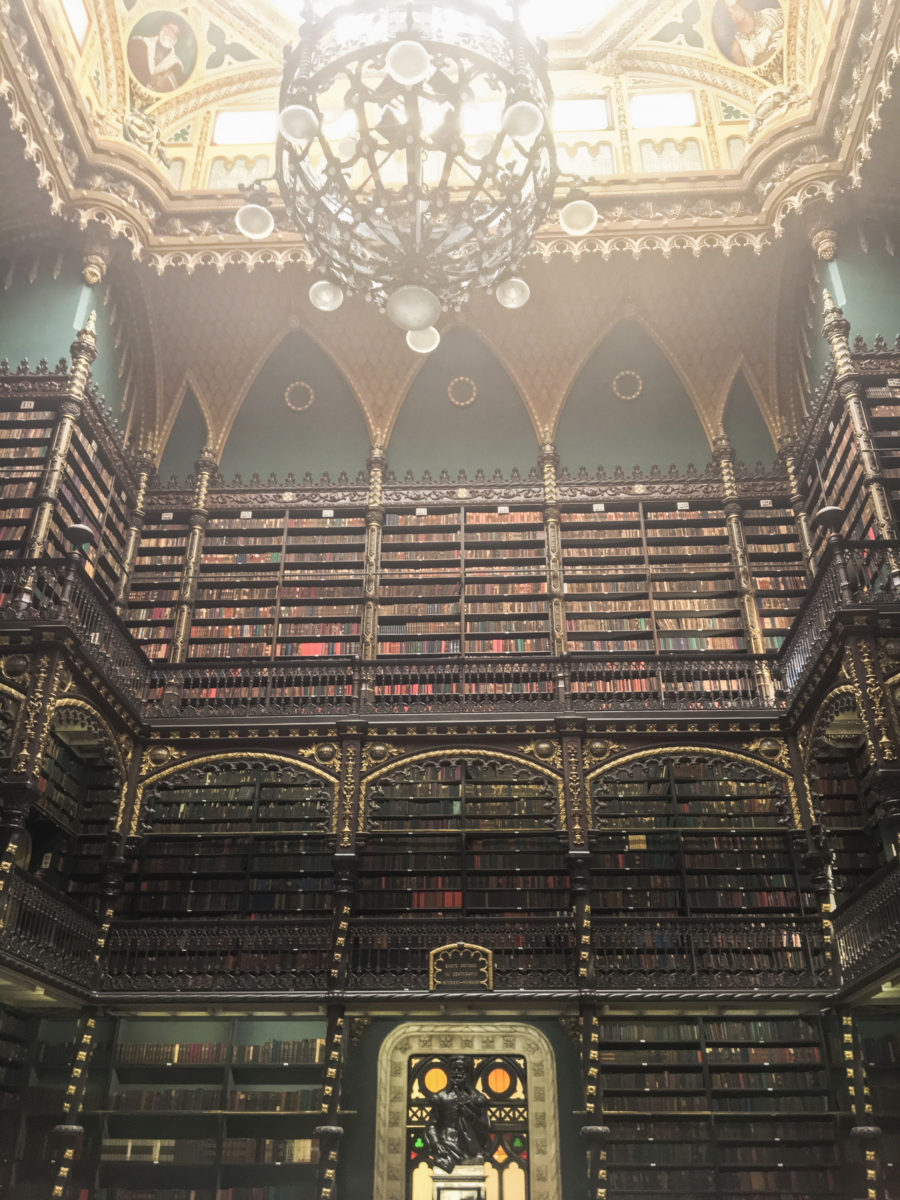
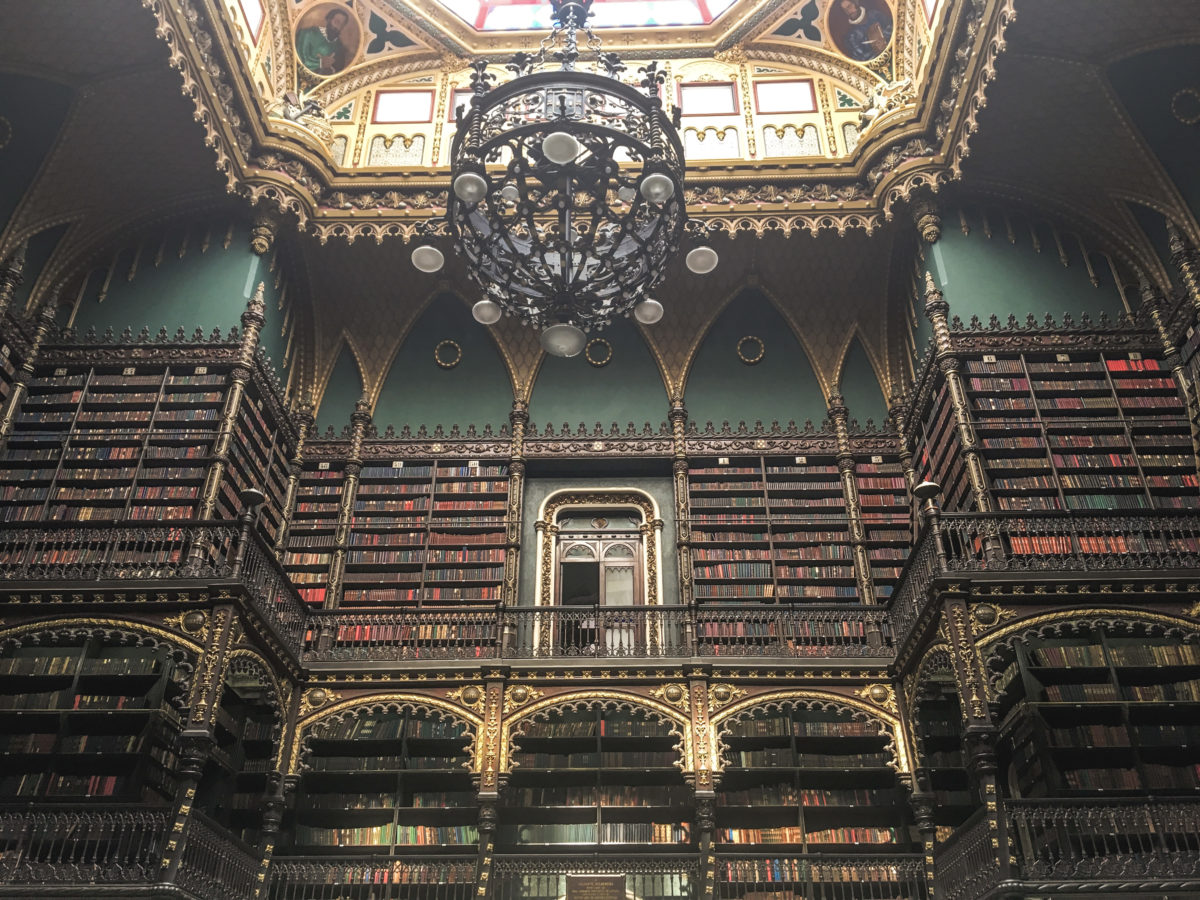
It has what is considered the largest and most prestigious collection of Portuguese books outside Portugal. Students and Brazilians flock from all over the country to sit under its glass dome, which lets in perfect light and is ideal for reading, which is now an integral part of Brazilian heritage.
I couldn’t imagine going to Rio and missing this marvel. I was delighted by what I discovered, and I encourage every visitor to the cidade maravilhosa to go there.
New York Public Library
The New York Public Library has symbolised the democratic ideal of unrestricted and open access to knowledge since it opened to the public in 1911.
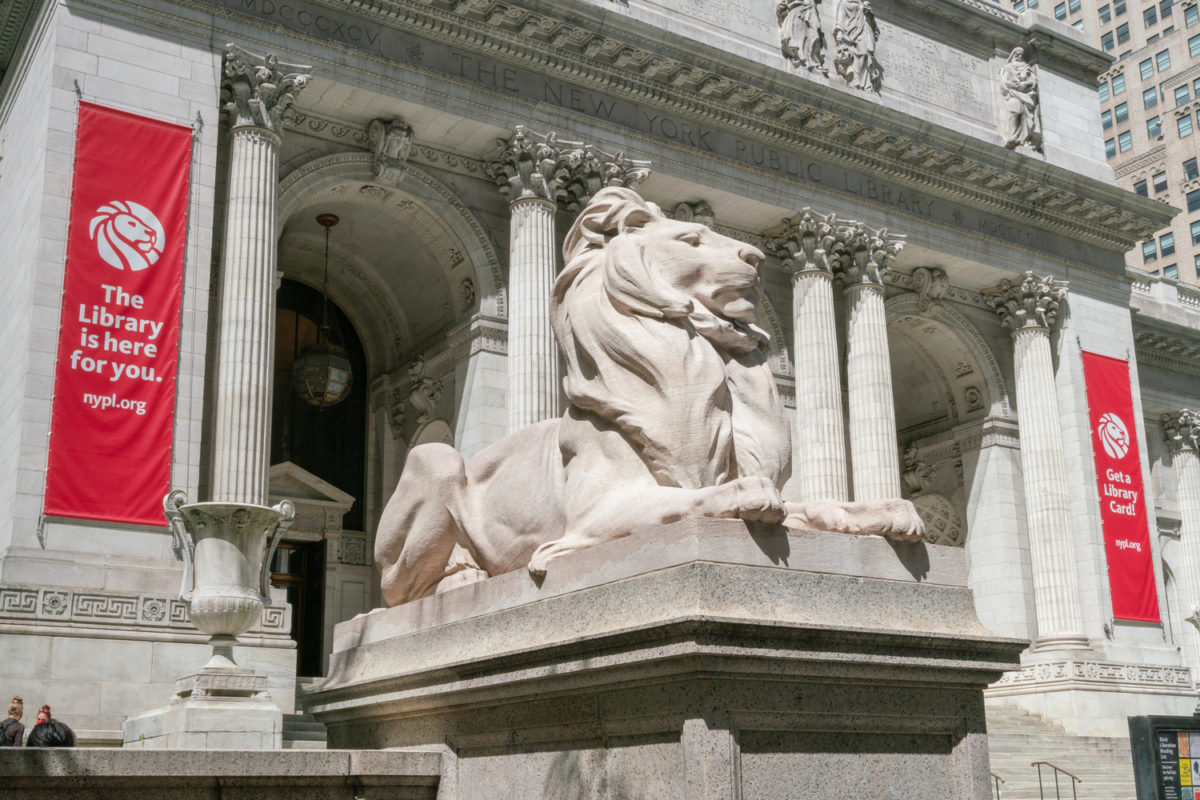
Today I’m going to make a special mention of the Stephen A. Schwarzman Building, since there are actually about 80 public library branches throughout the New York City area (including Staten Island). A magnificent example of the Beaux-Arts architectural style, the most emblematic building is located in Bryant Park on Fifth Avenue and allows anyone to visit it (for its magnificent architecture and permanent and temporary exhibitions), to study quietly or undertake research in the vast collection of books available.

The visit to the library allows you to discover a part of American history with various typical objects, but also to take a journey (or a mise en abyme) of New York with numerous paintings honouring the city that never sleeps.
The most famous room in the building is the Rose Reading Room. This is one of the city’s great public spaces, a shared room dedicated to private mental endeavours, with a cloudy sky on the ceiling that invites you to daydream.
Juristische Bibliothek in Munich
While strolling around on Pinterest, I came across pictures of the Munich Law Library, so during my jaunt to the Bavarian capital, I went in search of it.
It is the most beautiful library in Munich and was founded in 1843 in the New Town Hall (Neues Rathaus). More commonly referred to as a reading room, it impresses with its 10-metre height and its gilded iron spiral staircase. It radiates a special atmosphere, and I was fascinated to see all the (old) law books it contains.
Normally, the reading room is only visited as part of guided tours of the Rathaus in order to leave users and students in peace. However, when I entered it, I did not know this (in April 2017). On the door to the library, it was written to leave your personal belongings in a locker, which I did. Then I entered through this door, where a librarian explained to me that access was reserved for students. I simply explained in German that I just wanted to see the library. Seeing my interest, that I was alone and that I had left my belongings in the locker, she let me in on the condition that I did not take any pictures or disturb the people working inside.

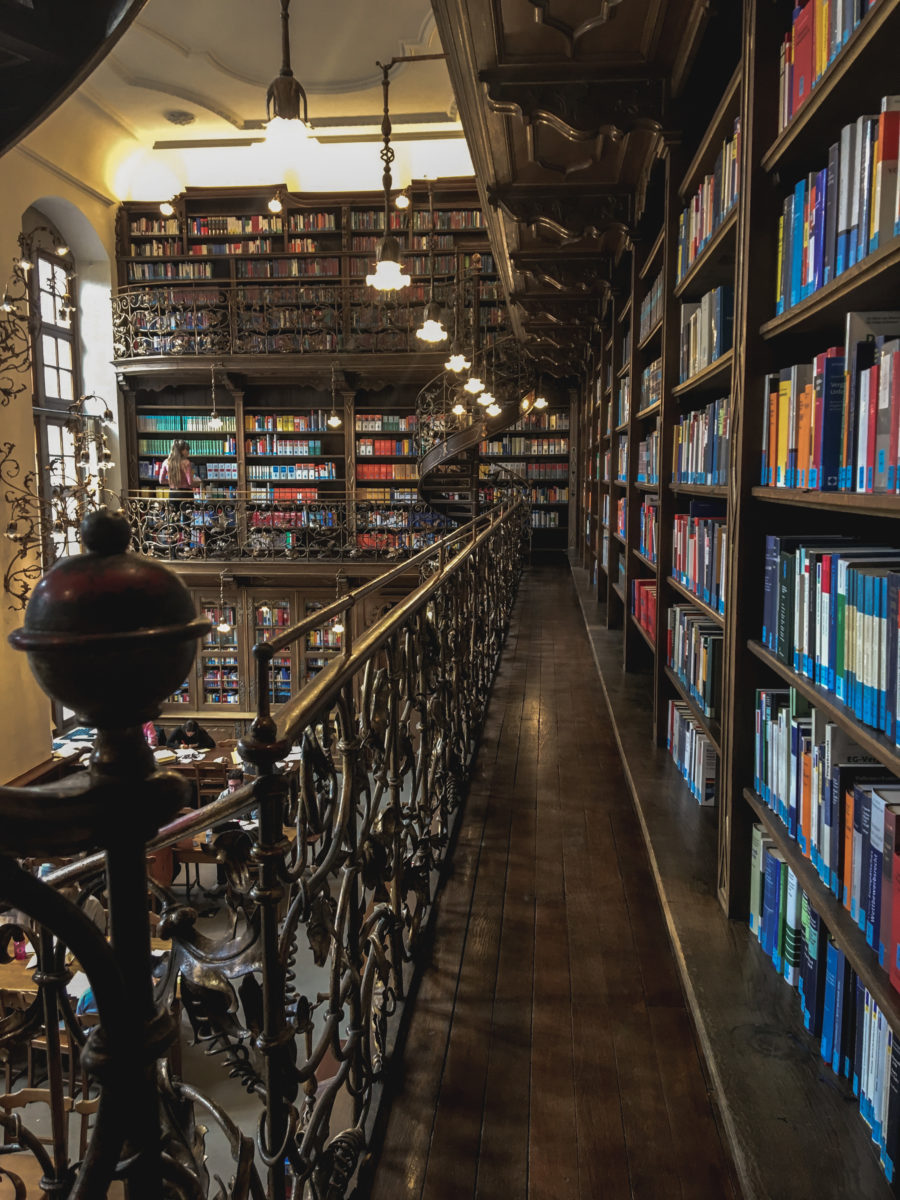
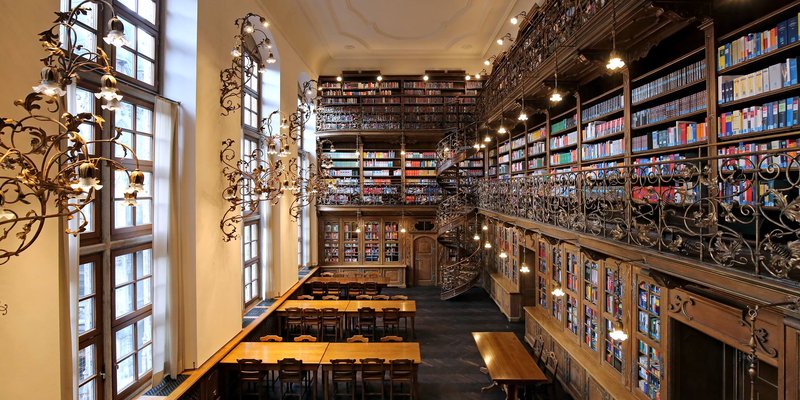
I simply disobeyed her order not to photograph the reading room (how could I resist the temptation to leave my phone in my pocket?) and spent about twenty minutes wandering through the stacks of books under the suspicious gaze of another librarian, a little less friendly than her colleague. On my way out, I chatted vaguely about the place again, but I didn’t understand all she explained to me except that this room is still a little gem that few people know about.
Braidense di Brera in Milan
It was purely by chance, while walking around Milan one day, that I discovered this jewel in the Pinacoteca di Brera. As usual, I saw a sign announcing the term “library” and I decided to have a look at it. I was well advised, given what I discovered: the National Library of Brera.
It was founded in 1770 on the initiative of Maria Theresa of Austria and opened its doors in 1786. Over the years, the collection was enriched in collaboration with the Austrian Imperial Library and became a public library in 1880.
There are nearly 900,000 books in the library, but not in plain sight. Indeed, I was quickly called out when I entered the different corridors, not looking like a typical student.
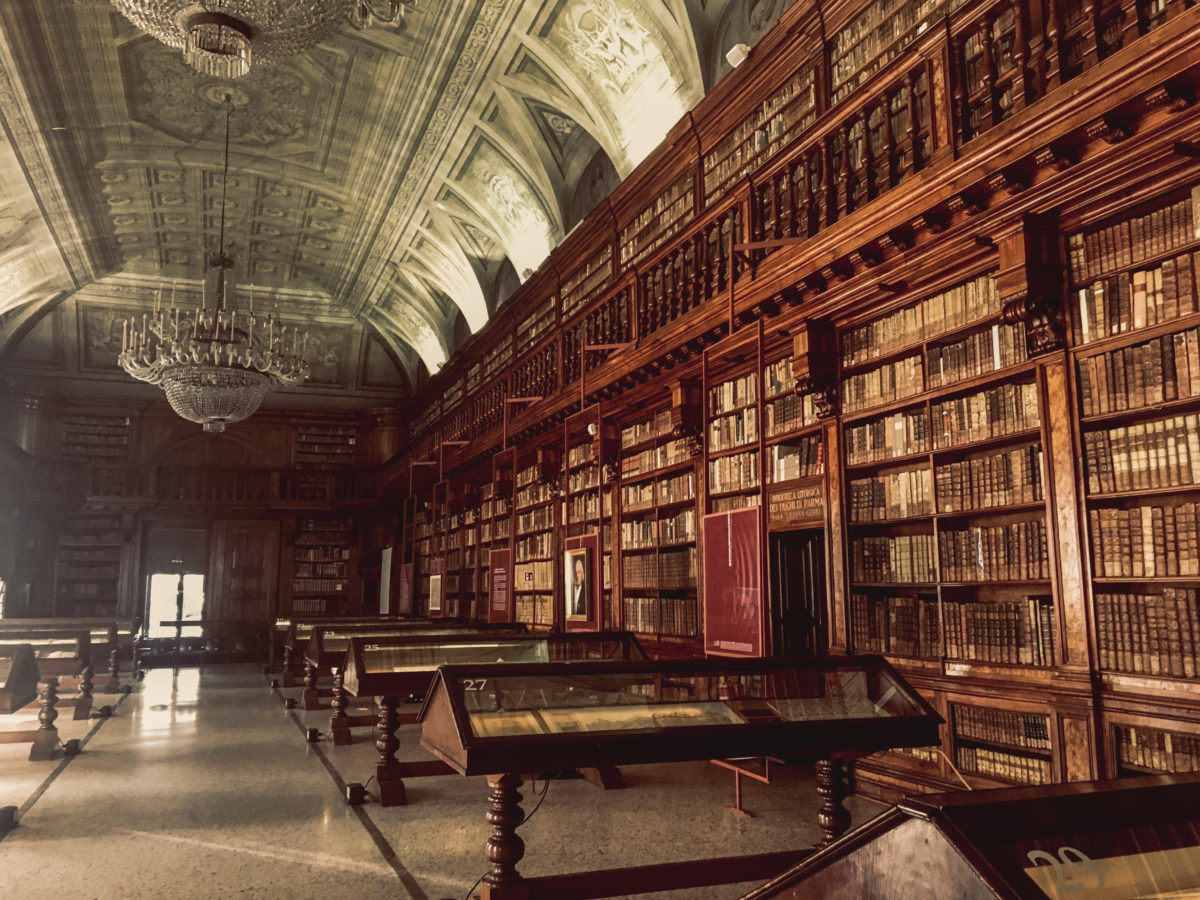
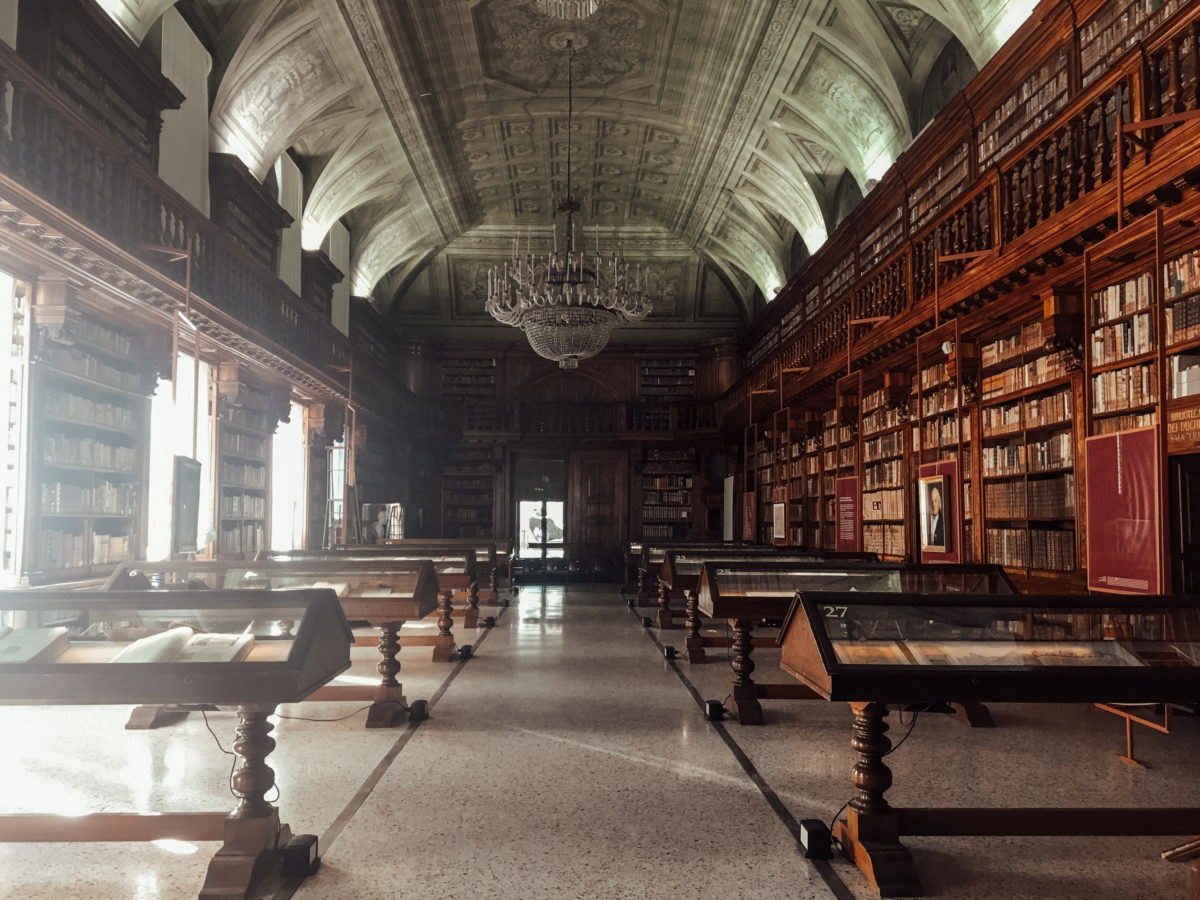
Part of the library is not visible to the public, but I later learned that depending on the cultural events or exhibitions that take place there, it can be visited in its entirety. Despite this, I was able to see the main room, which is the most beautiful and defines the architecture of the libraries of the past.
Visit Milan, The Bustling Metropolis Of Northern Italy
Rijksmuseum’s Cuyper’s Library in Amsterdam
It was at the end of a corridor in a museum in the Dutch capital that I discovered a library nugget, straight out of a universe such as Harry Potter. I simply didn’t expect to discover this, being more in search of Rembrandt or Vermeer, and that’s what makes it so charming.
Indeed, the reason I was at the Rijksmuseum is that it is the Dutch national museum in Amsterdam. It has a vast collection of art, mainly paintings from the so-called Dutch Golden Age (the period of Dutch history between 1584 and 1702). Within it, the Cuypers Library is the largest and oldest art history library in the Netherlands.
In order to get a deeper insight into the museum’s collection, visitors, students or art historians are invited to wander around. Naturally, I was not looking to increase my knowledge of art, but rather to discover its architectural particularities, although the library has been collecting content since 1885 (if you are an art or art history buff, this is definitely the place to go).
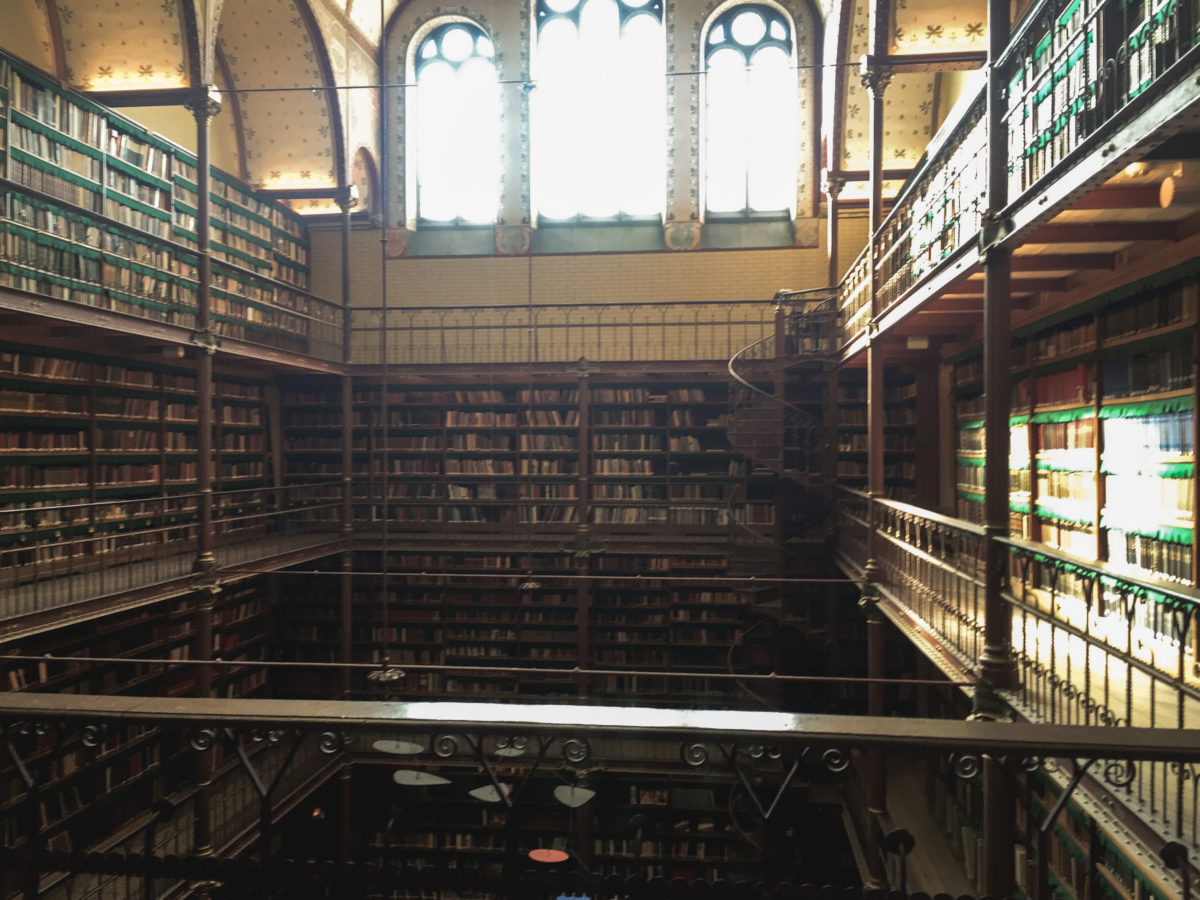
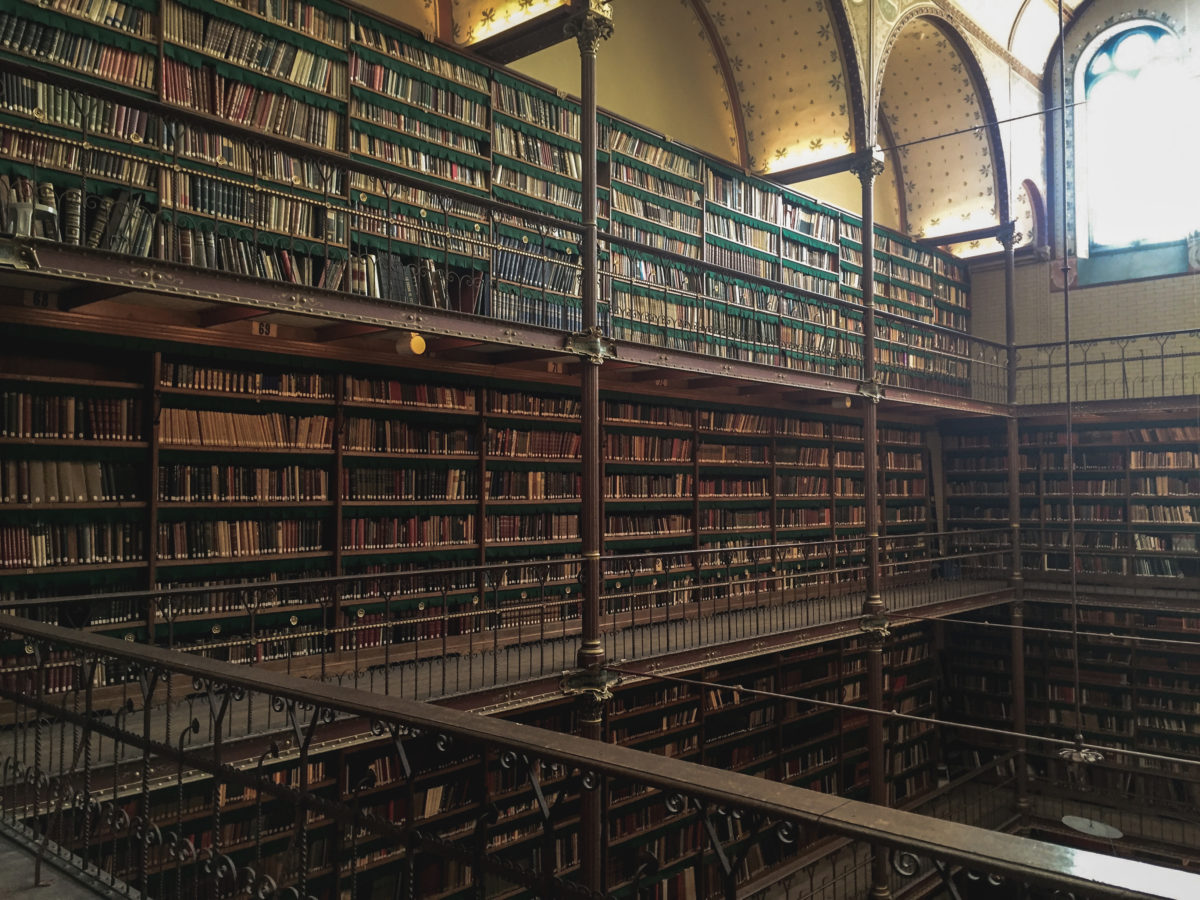
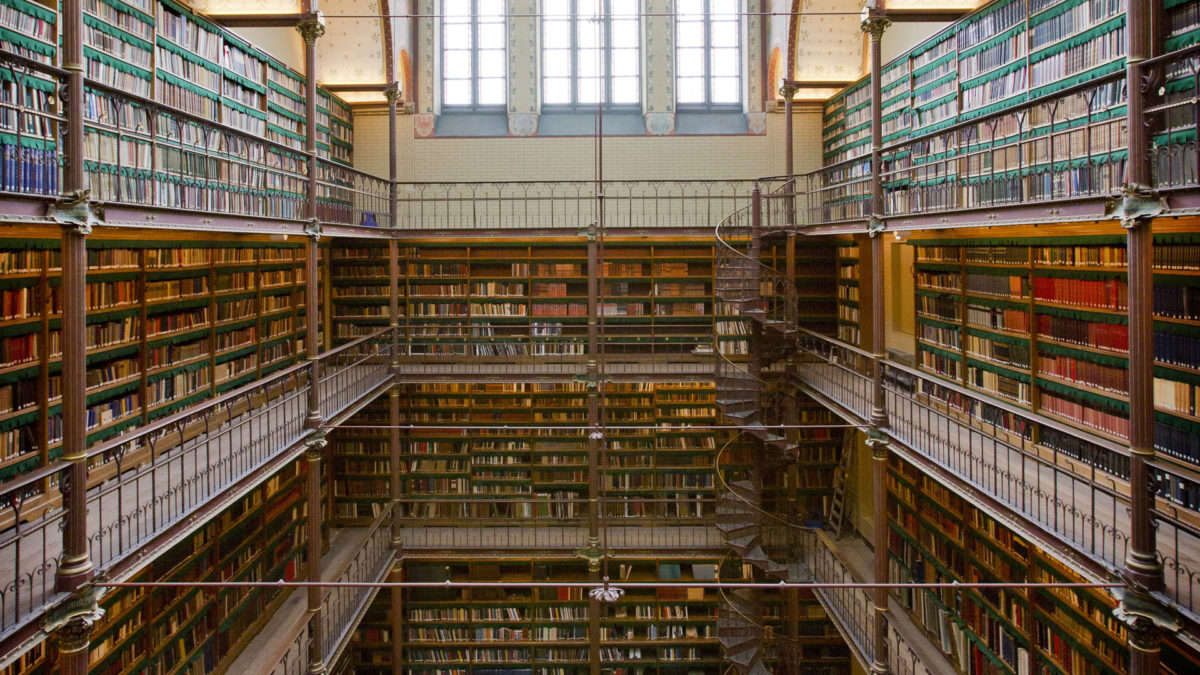
Thousands of books sit on the shelves, creating what looks like wallpaper with colourful bindings. Sunlight streams through the windows, bathing the books in a soft glow, and a spiral staircase winds around the corner like a metal ribbon, allowing bibliophiles and art history buffs to make their way through the various levels. Simply a must-see for any lover of old book spaces.
Admont Abbey’s Library
In my opinion, the most spectacular library ever! I tell you more about it in this article:
Admont Abbey, Austria’s Hidden Treasure

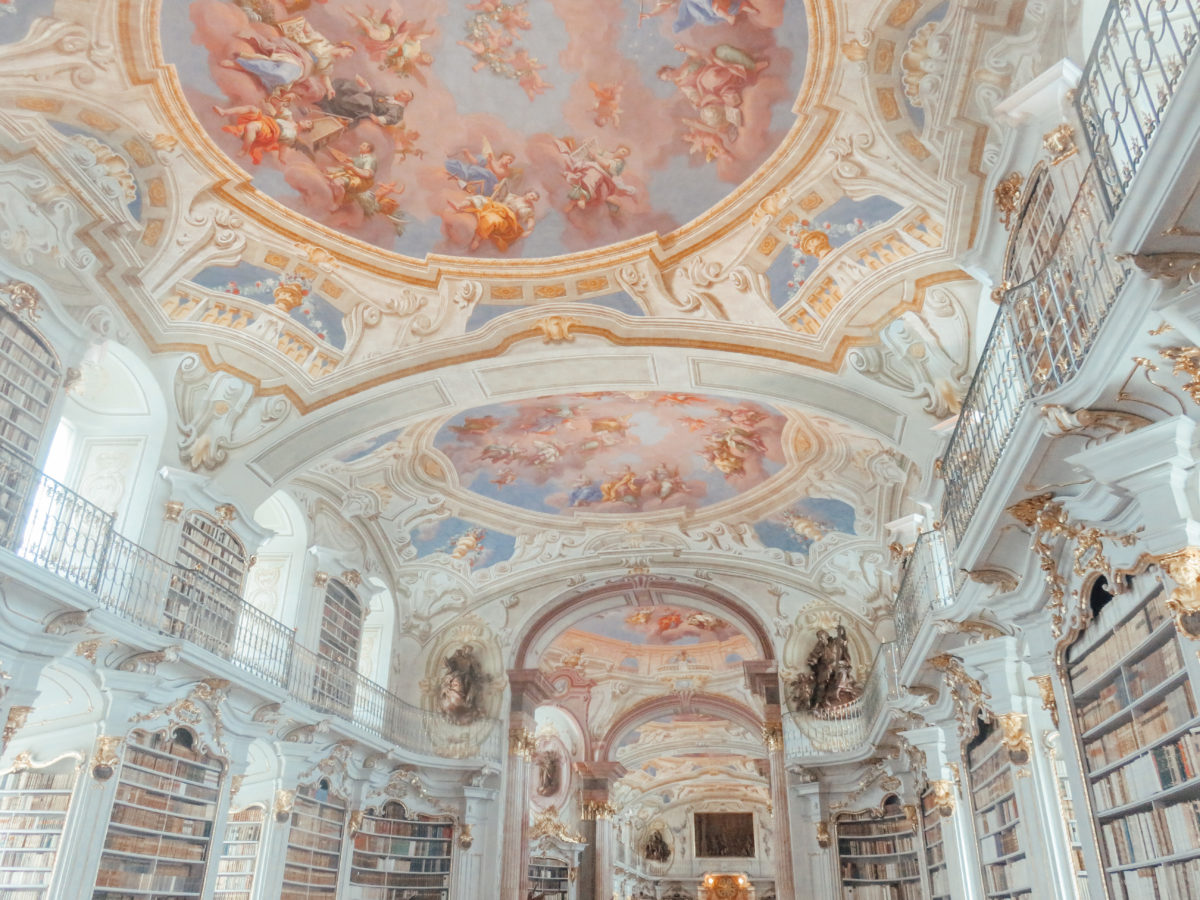

Monastery Library of St. Florian
After visiting the fabulous monastic library of Admont, during my Austrian train trip in pursuit of famous Austrian libraries (is this a glamorous summer plan at the age of 24? I don’t know…), I went to the town of St. Florian, 15 minutes by bus from Linz (they eat a famous pie there), especially to discover the monastery of the same name (well, of course, just to see its magnificent library with my own eyes, but you get the idea).
In order to enjoy this temple of Austrian knowledge for a few privileged moments, you will have to take part in the official tour of the entire monastery. Only the guide has the key to the large door leading to the library. But do not worry, the guided tours happen every day. The only worry is that they are only conducted in German. But fortunately, even monasteries that are hundreds of years of age are getting up to speed and offering an audio guide in various languages (although you will have to do the tour in German while listening to your audio guide, so in the end I enjoyed cultivating my German listening).
I came away amazed at the splendour of some of the rooms in the monastery, but especially by the lightning speed of the passage through the library, which I felt was the room to visit and comment on, as opposed to the scabrous bones or other insipid corridors.
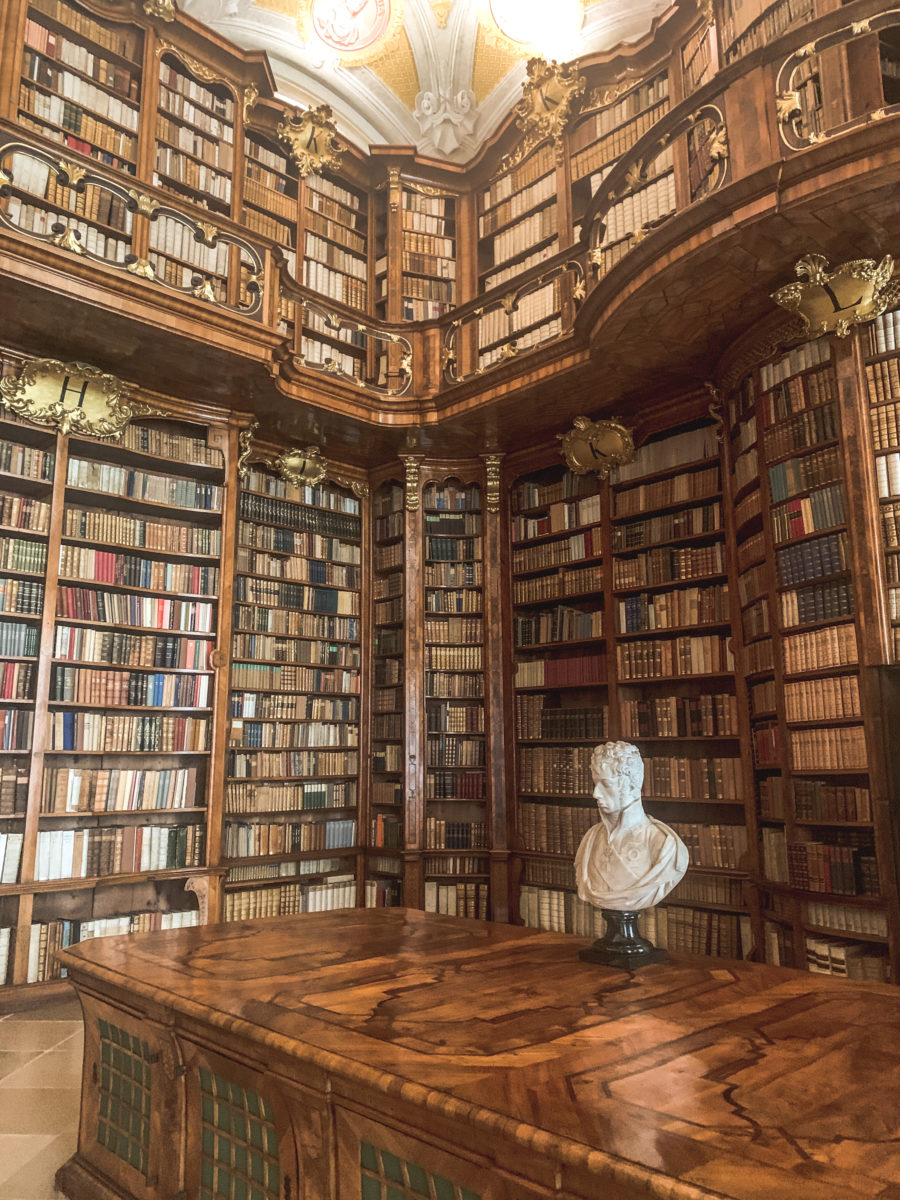
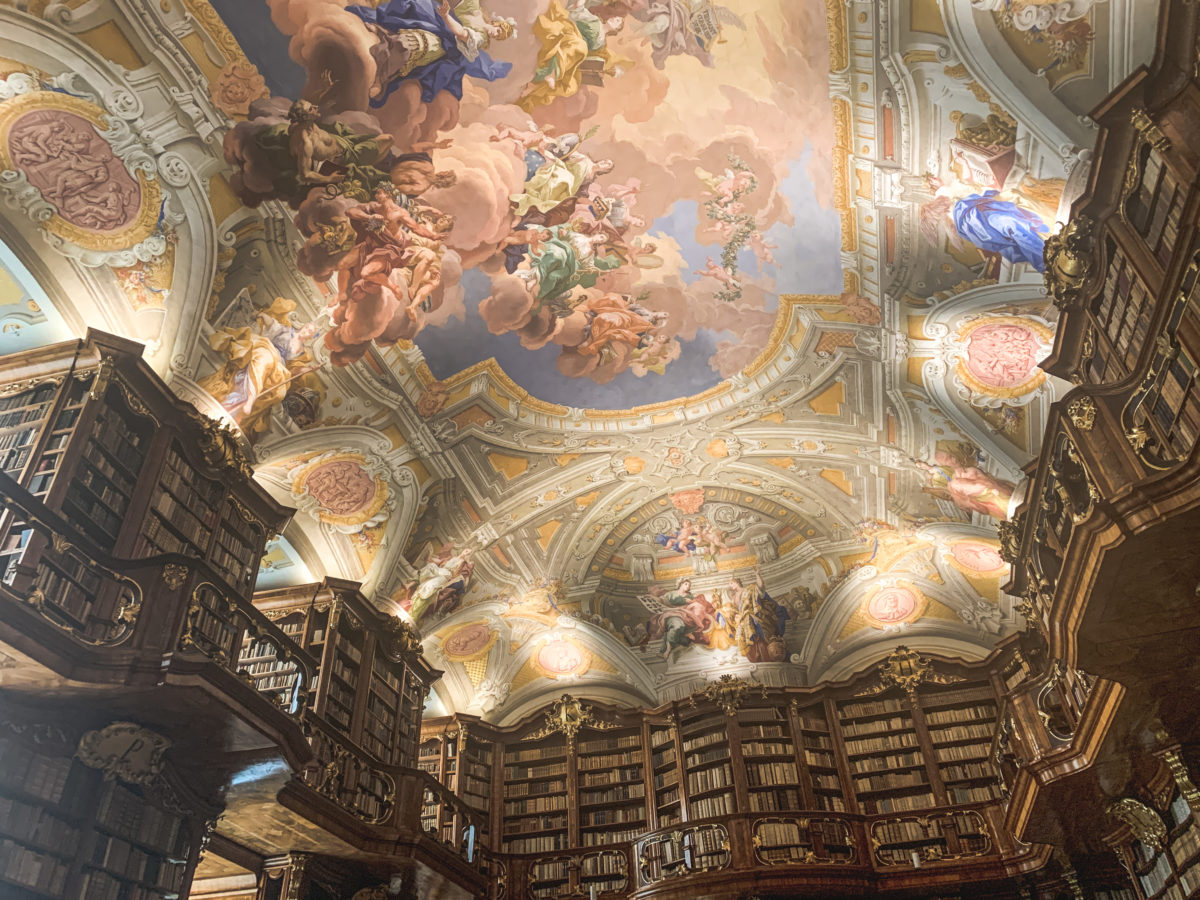

So if you go there, take the time to observe the various imposing wooden shelves housing 150,000 volumes as well as the magnificent main hall, in late baroque style. Although a little dark, the touch of colour comes in the form of the fresco on the ceiling, created in 1747, which shows the marriage of virtue and science, all under the protection of religion (indeed, we have to remember that we are in a monastery).
Austrian National Library in Vienna
A must-see monument in Vienna, it was however during my third visit to the Austrian capital that I was finally able to visit this wonder.
Located near the Hofburg Palace, of which it is the former court library (Hofbibliothek, until 1920) and in the city centre of Vienna, the Library and its ceremonial hall (Prunksaal) is considered as one of the most beautiful baroque libraries in the world. This is mainly due to its simply impressive State Hall.
The library, a true gem of Baroque architecture, was built in the first half of the 18th century as a separate building from the imperial residence Hofburg. Emperor Charles VI ordered its construction. Surrounded by marble statues, paintings and frescoes on the ceiling, more than 200,000 books, published between 1501 and 1850, are kept on walnut shelves.
So indeed, when you enter it, you will be immersed in the huge and unlimited collection of books and other published documents, sculptures and statues, maps and globes. Indeed, apart from its overall beauty, what I appreciated most during my visit were the 4 Venetian globes in the centre of the room (2 terrestrial, 2 celestials). They are the work of Vincenzo Coronelli (1650-1718) and are one metre in diameter.
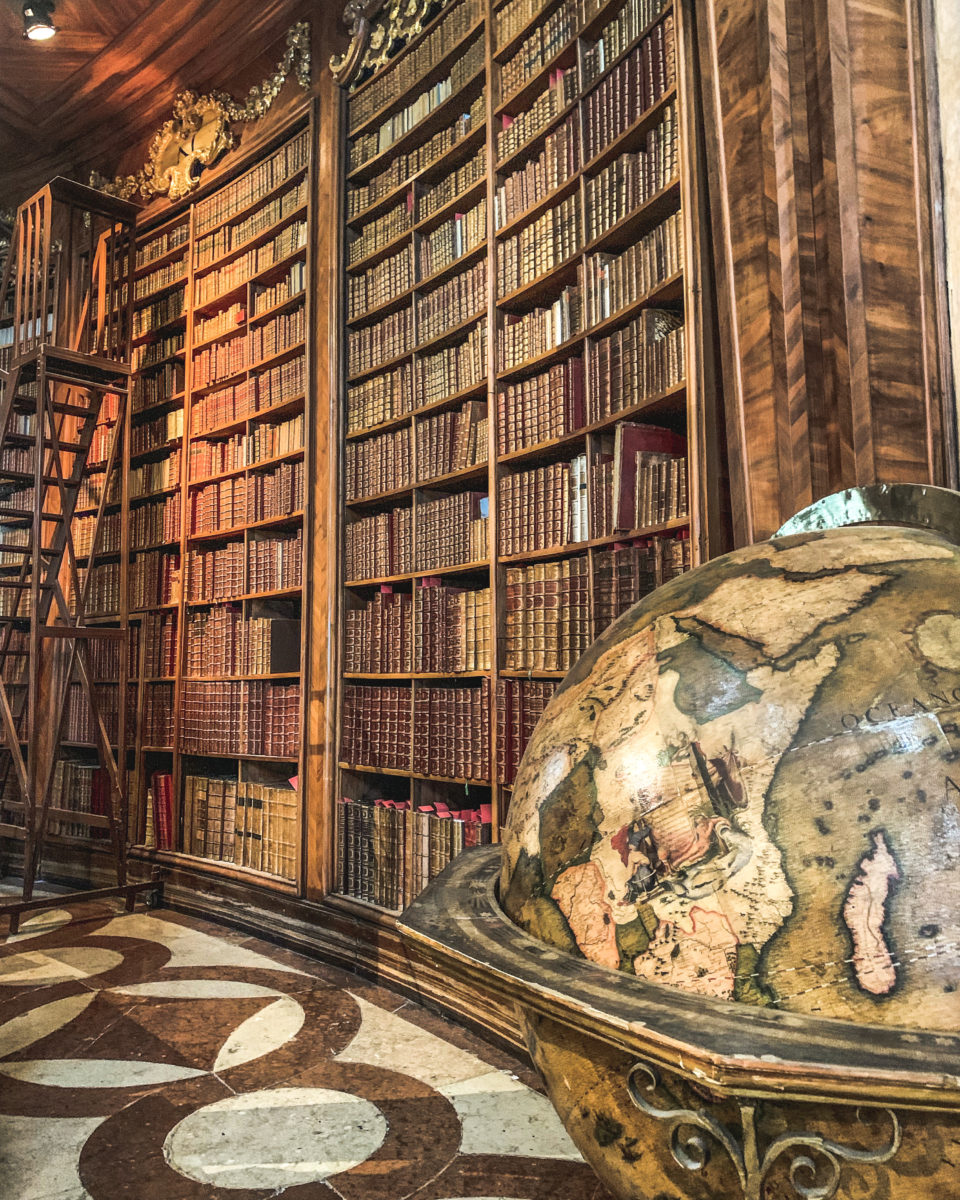
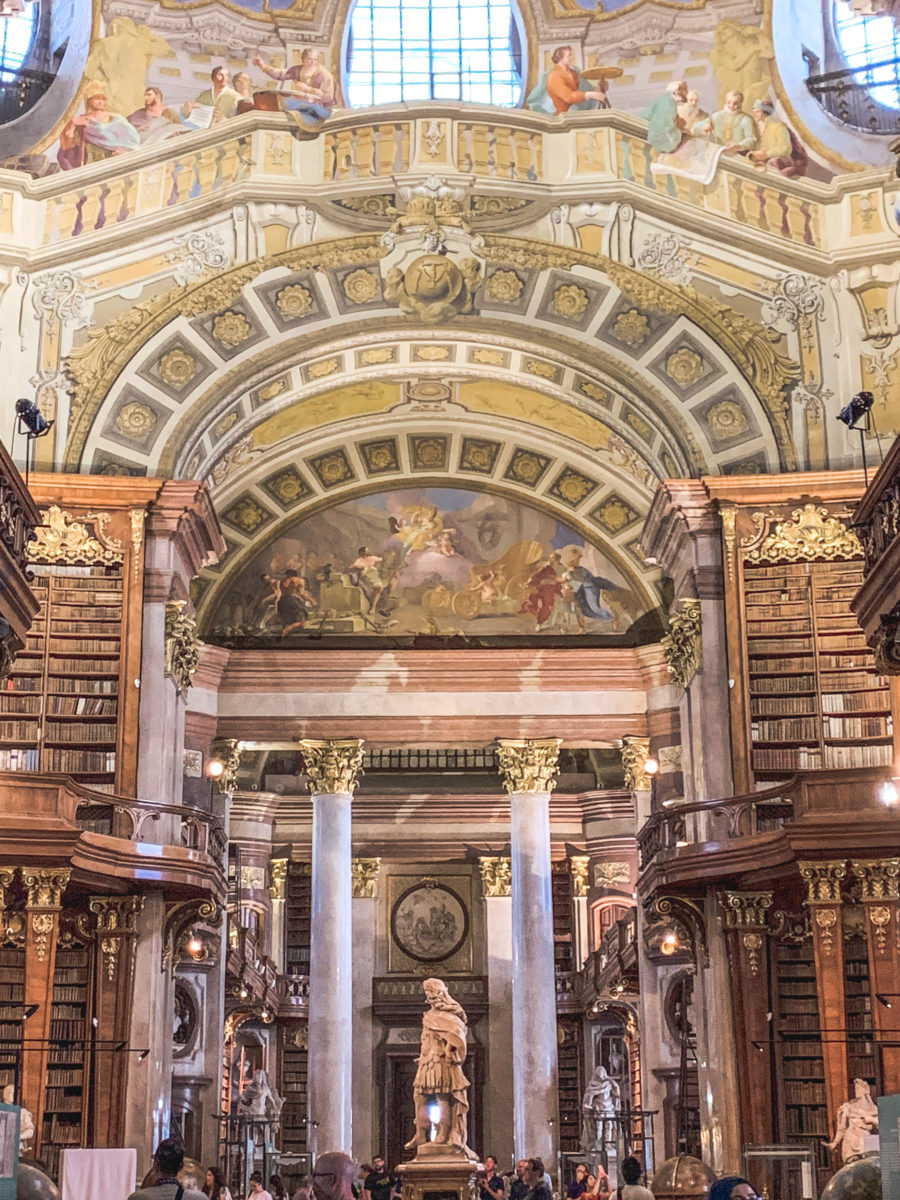
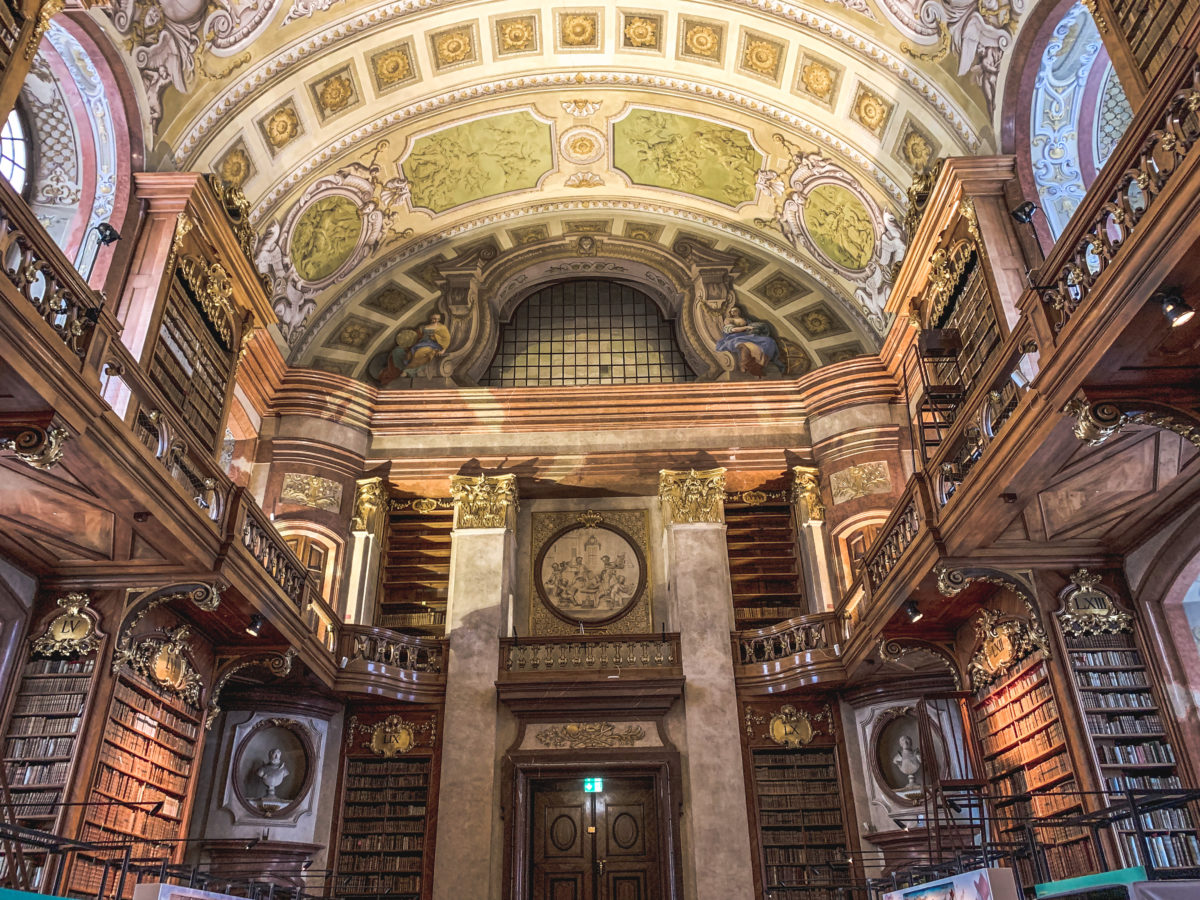
Without a doubt, the library exudes a pleasant and relaxing atmosphere amidst the hustle and bustle of the city – a true example of the elegance that is Vienna.
Trinity College Library in Dublin
A must-see on the Irish tourist scene, the University of Trinity College is an inspiring place and one of the most renowned in the world. This is due to its cobbled lanes, Victorian buildings, legendary courses of study and its magnificent library.
Most visitors come to see the medieval Book of Kells, famous for its 680 remaining pages of the four Latin gospels of the New Testament. Personally, although I found this book very intriguing, as well as the exhibition called The Treasury on Irish illumination, it was the wonderful reading room that fascinated me with its dark, wooded architecture.
It is an intimate (if you take away the many visitors) and attractive place. One goes in and most likely comes out an hour or two later, having spent the time naturally snapping pictures of everything (flash is not allowed) but also reflecting on the legacy of such a place.
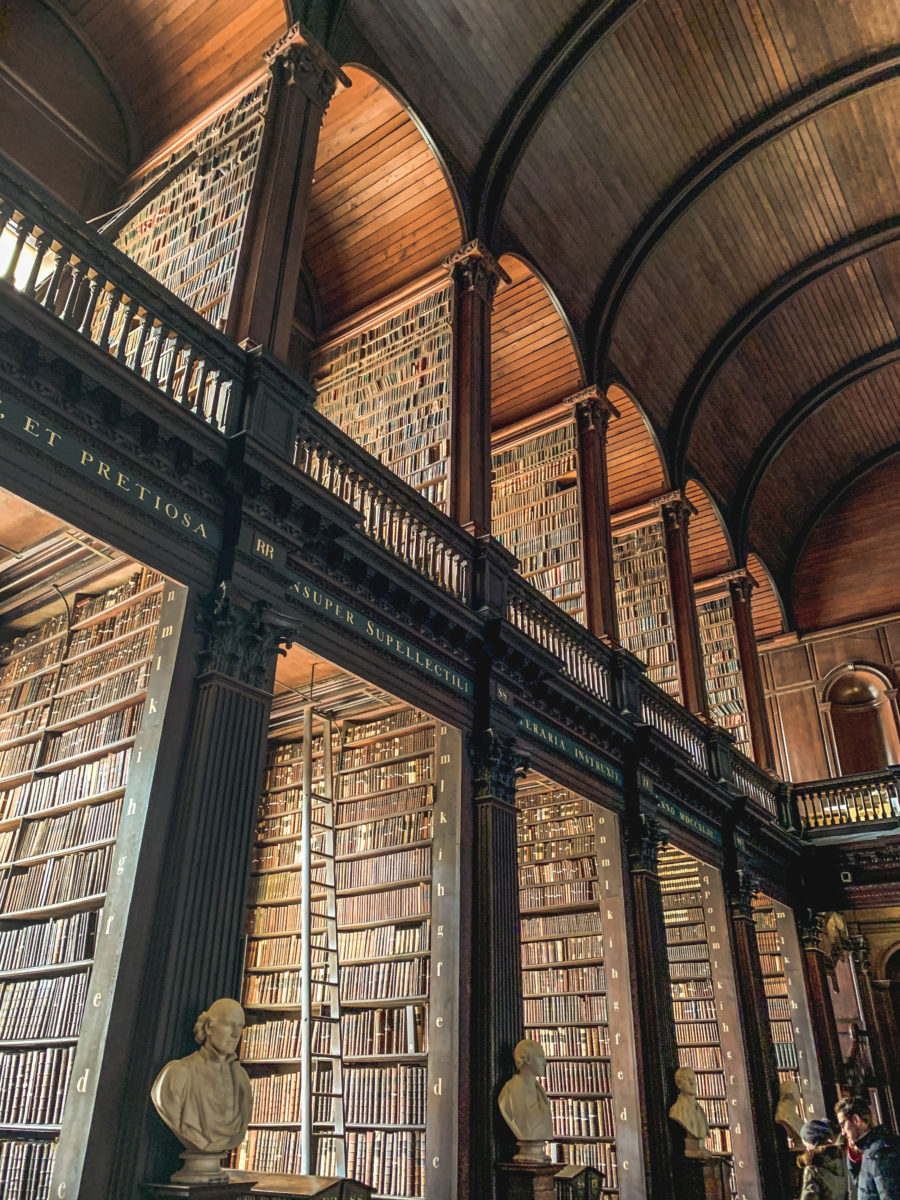
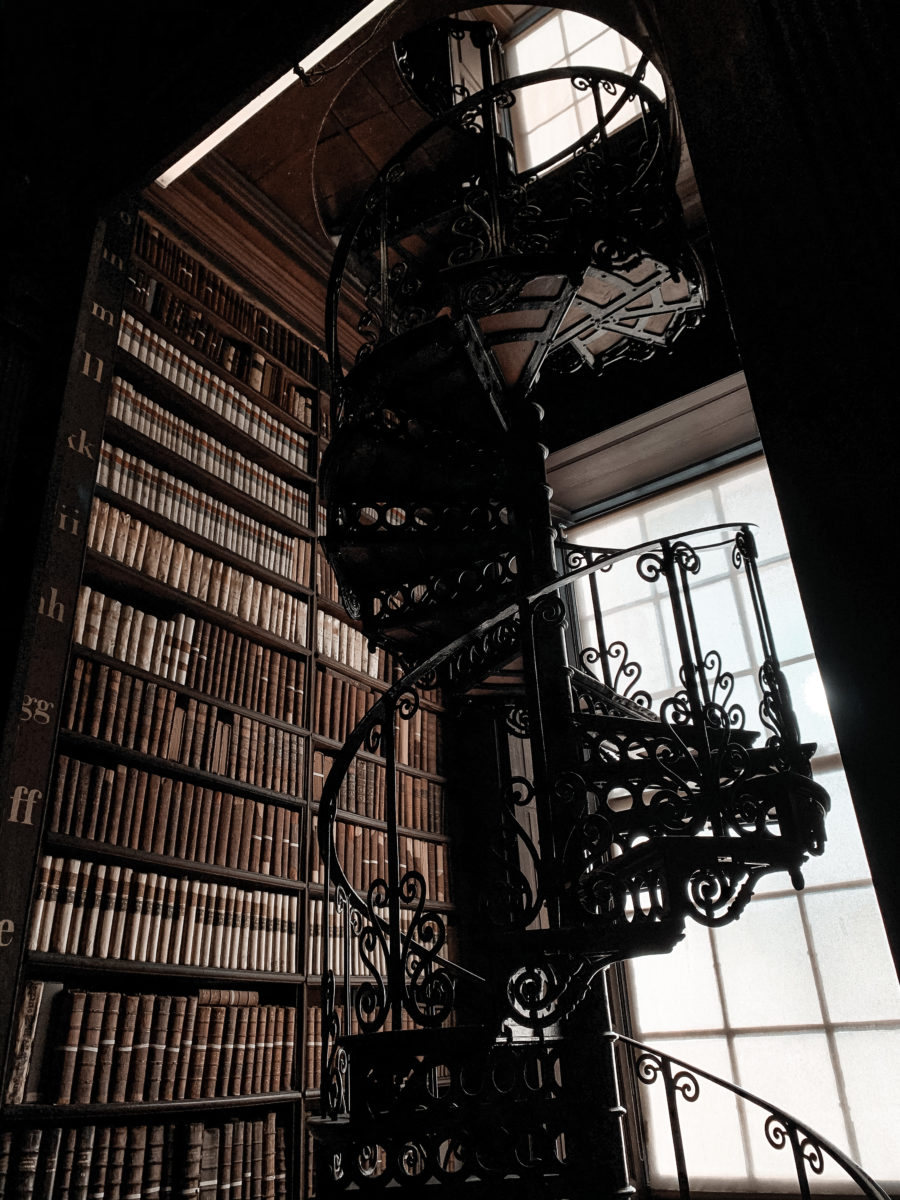

Apart from its breathtaking interior architecture (should we talk about the gorgeous spiral staircases?), it’s a great place to stop if you’re a fan of busts of famous figures from Anglo-Saxon culture as well as famous students who have walked the halls of Trinity College. But above all, this collegiate heritage rightly transports us back to a time when the concepts of mobile phones and computers were only distant fantasies.
John Rylands Library in Manchester
Walking through the busy streets of Manchester, I noticed first-hand the contrast between the city’s old monuments and its modern renewal. However, the harmony is there and at the bend in an alley, I spotted the word “library” on the old rust-coloured facade of a kind of church, which turns out to be a neo-Gothic building made of Cumbrian sandstone (thanks wiki). That’s all it took for me to lead my travelling companion to the John Rylands Library.
With an exhibition on Dante’s Divine Comedy (the Inferno collection is among my favourite Italian classics) at the time, I visited (July 2022), I was overwhelmed by the building’s interior architecture with its lantern-lit corridors and magnificent columned hallway.
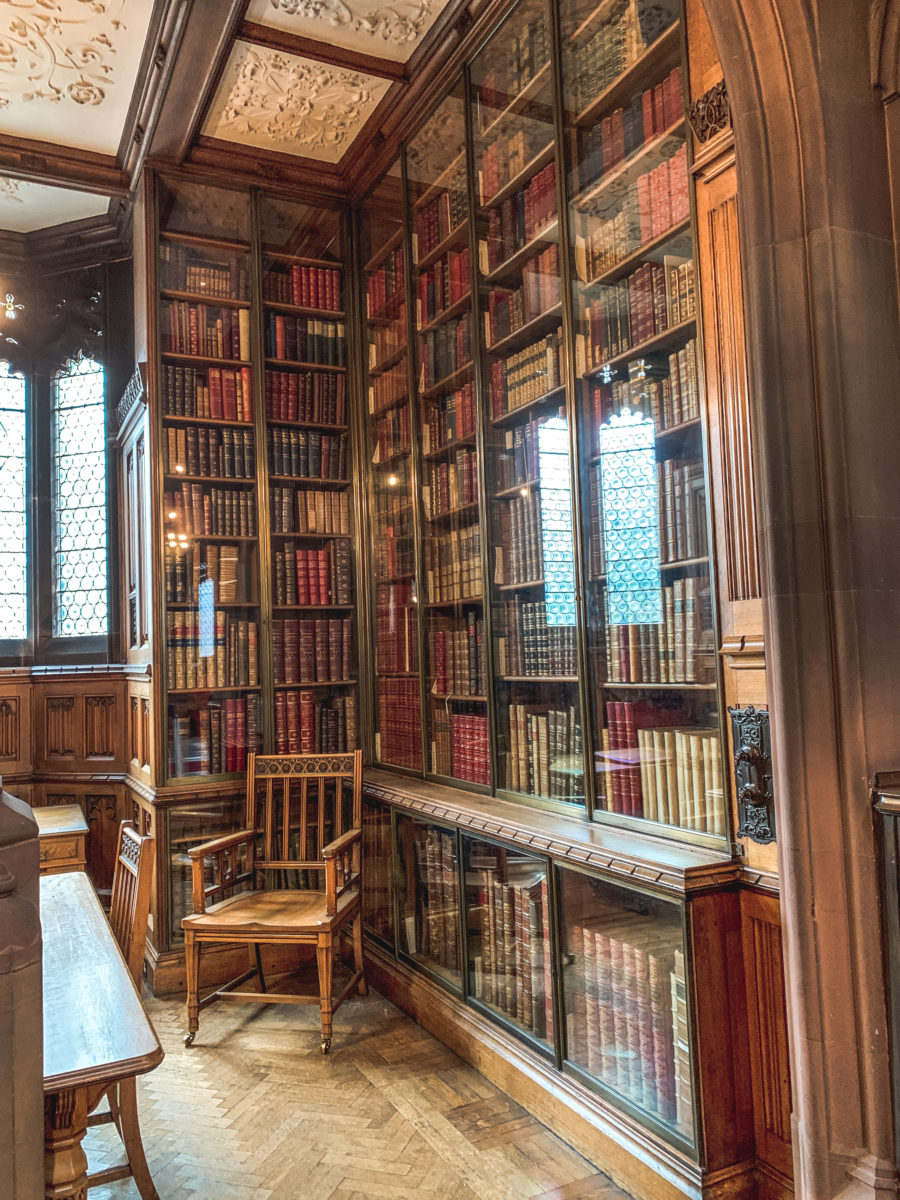
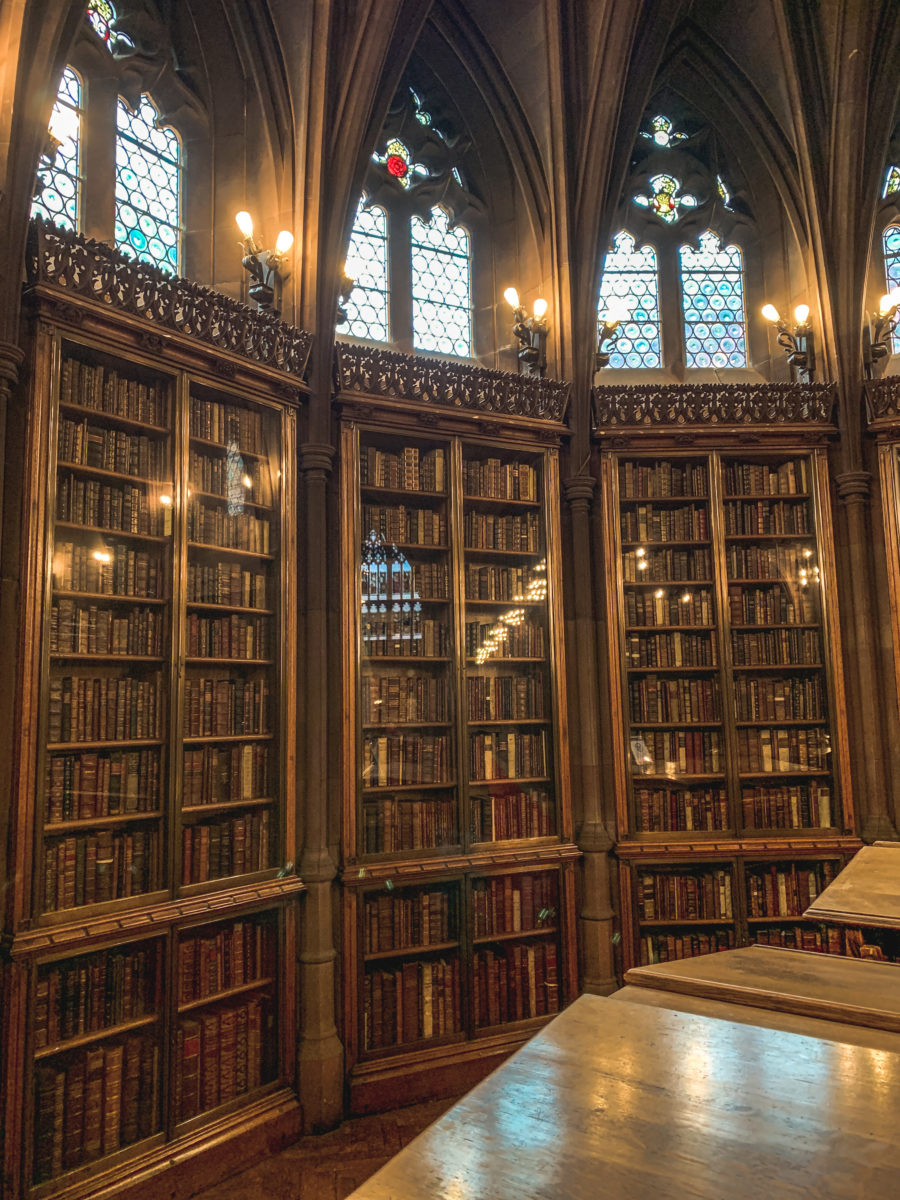
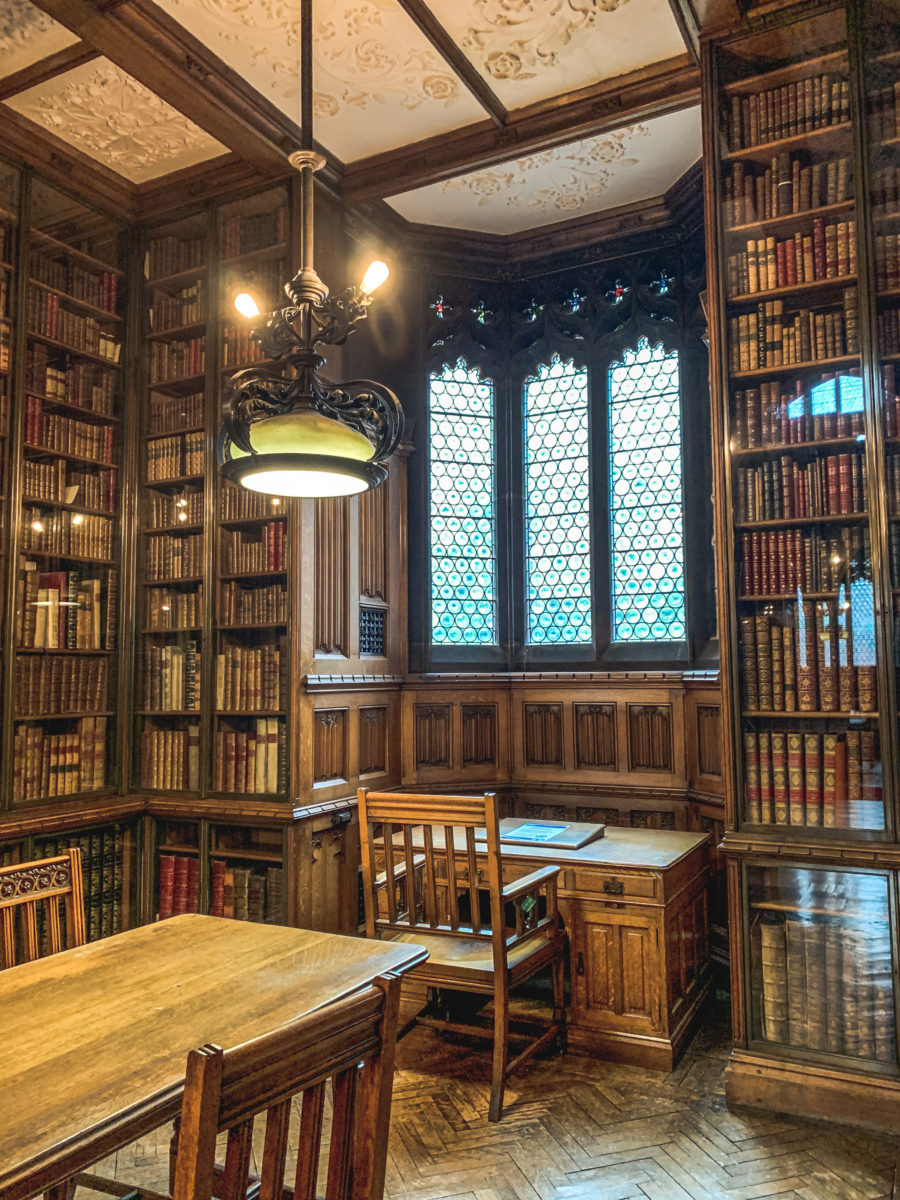
And then, as everywhere, the magic happens, when the door to the main library room opens and my eyes are drawn to the magnificent shelves, filled with books of all kinds and colours, some of which have become slightly discoloured over time.
Manchester is also home to another temple of knowledge in the form of the Central Library Manchester. Its circular main reading room is a beautiful find, with many quotations.
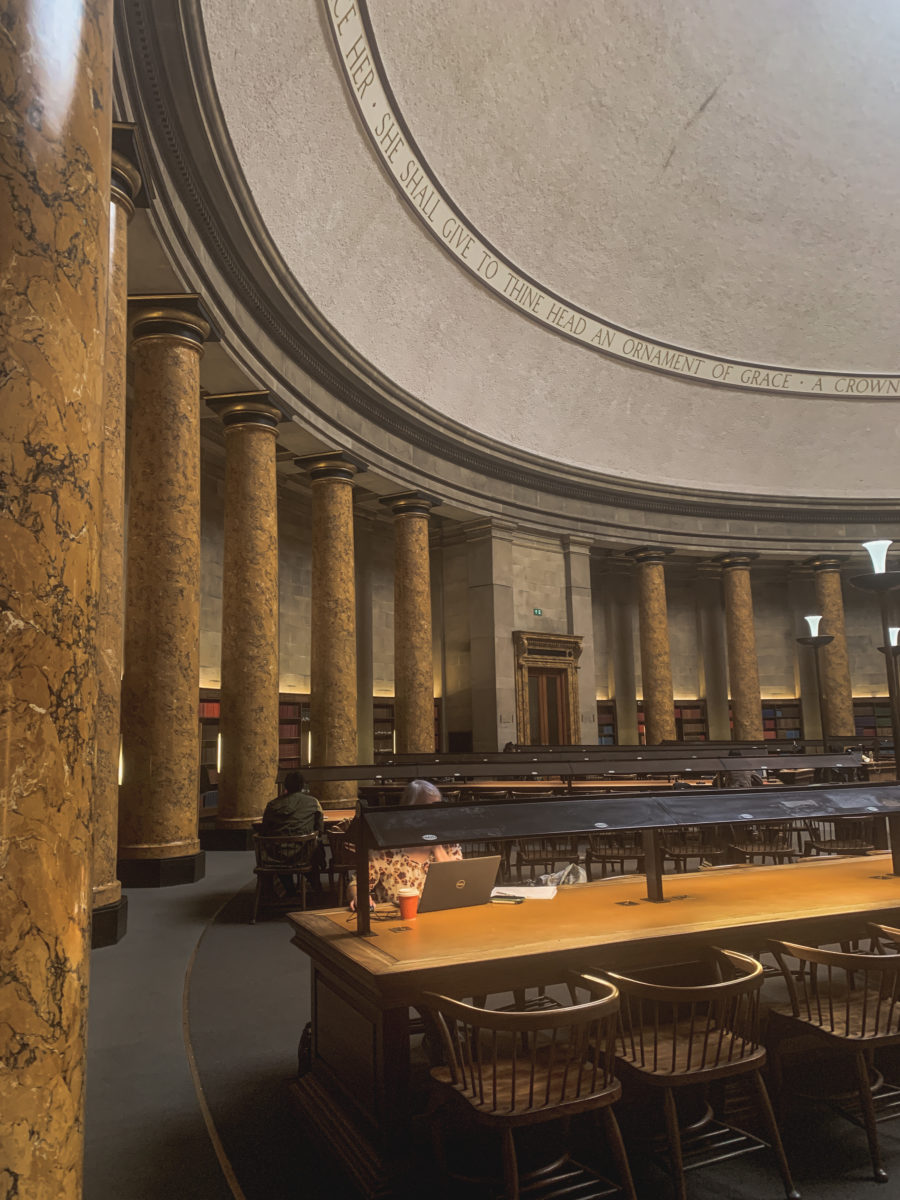
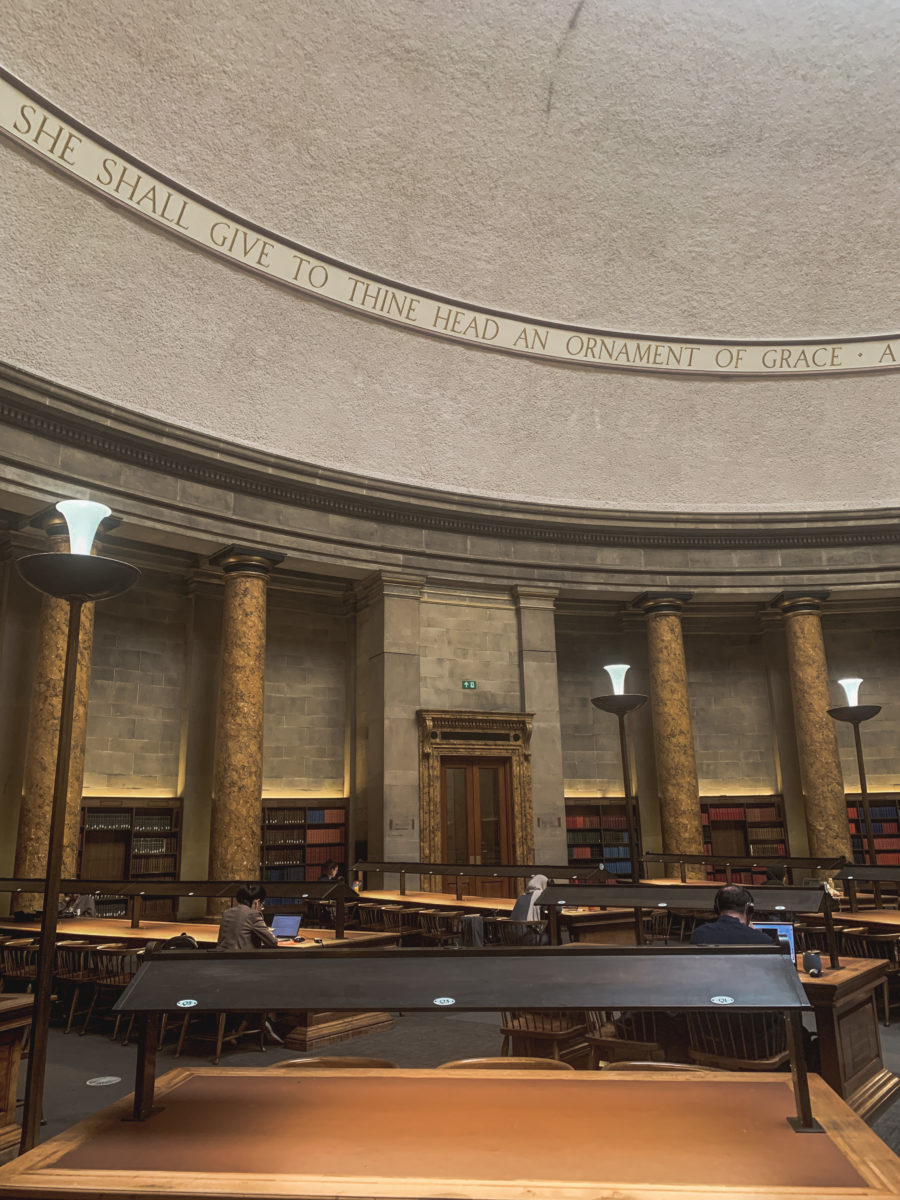
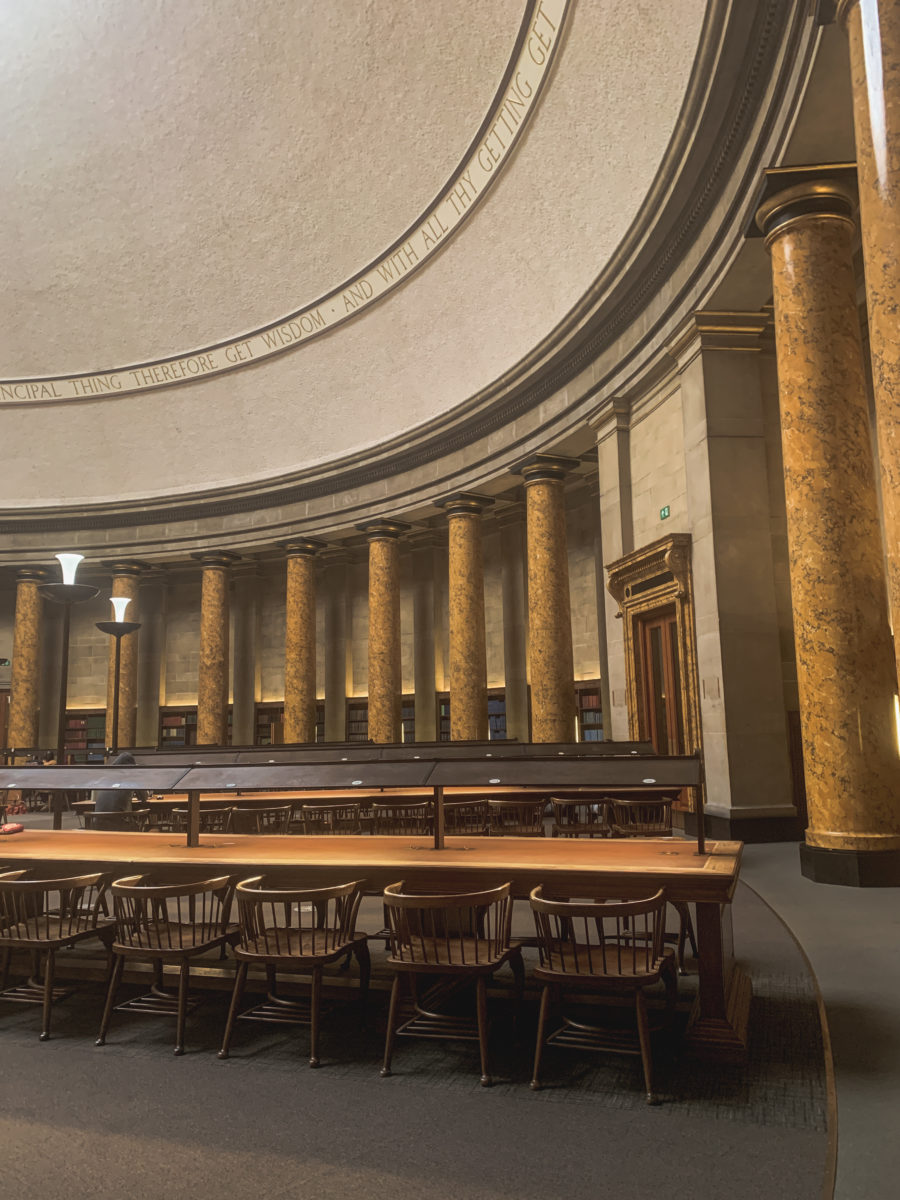
Abbey Library of St. Gallen
So there are beautiful old libraries, and then there is the library of St. Gallen Abbey. It is as simple as that when a picture of the library is revealed to the eye. The most beautiful library in the world is in Switzerland.
This is not chauvinistic for my country, but no other I have visited can compete. The one in Admont is close, but it is not the same colour tones and the size and history cannot be compared.
Thus, one of the oldest libraries in Europe that are still standing is also one of the most beautiful. The architectural plans attached to the main church date from the 9th century. The abbey grew over the years, as did its library, and the site soon became famous for its collections of manuscripts and illuminated writings, as well as becoming an important centre for Western science and culture between the 6th and 9th centuries.
In the mid-18th century, the collection was moved to a new library space lavishly decorated in the Rococo style. Elaborate works of art were installed on the ceiling, framed by drips and mouldings. The wooden balconies are decorated with floral shapes and patterns.
Today, the library is still considered to be of almost unparalleled beauty. It also holds one of the most important collections in the world, covering 12 centuries.
Normally, photos are not allowed, but I asked the person supervising the visitors if I could take a few, which I was granted. Also, before visiting the library, you will be given slippers to put on your shoes to protect the floors.
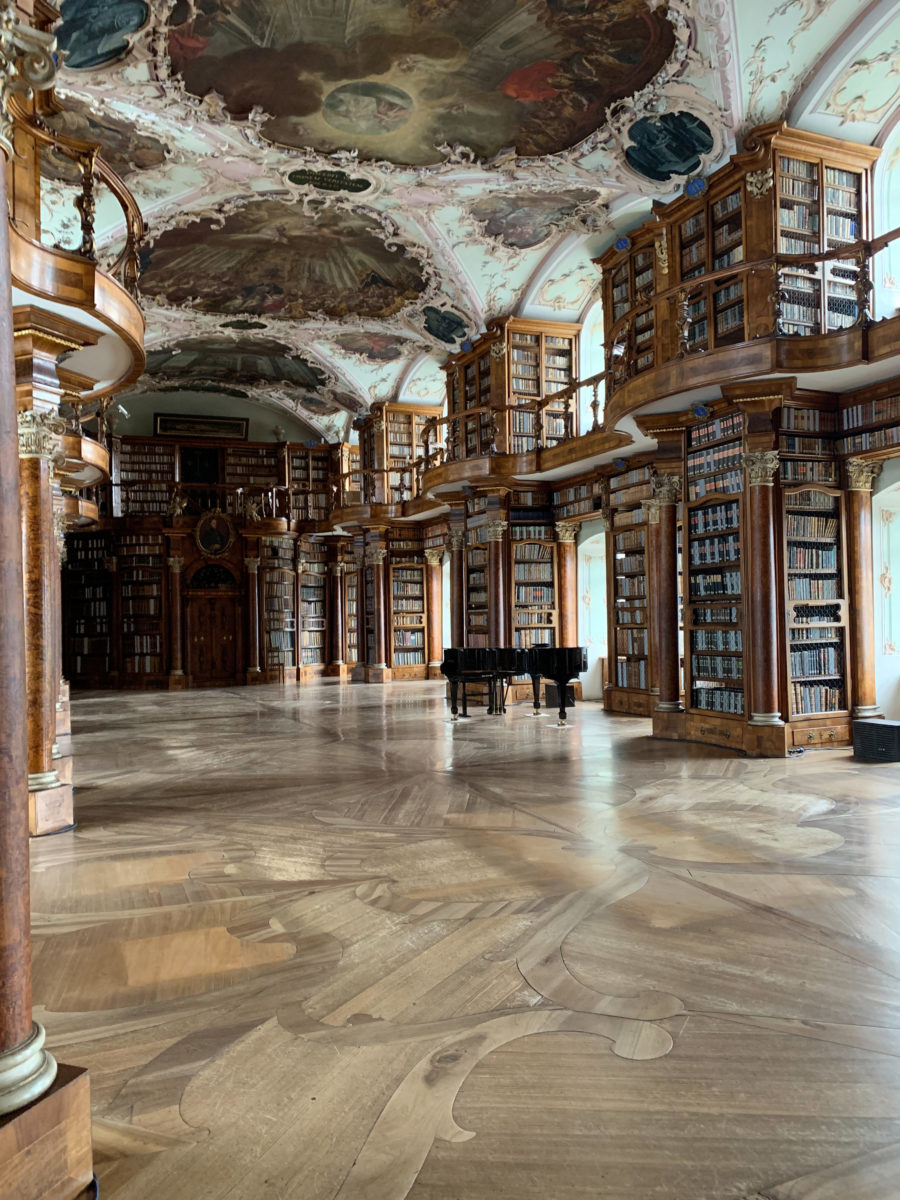
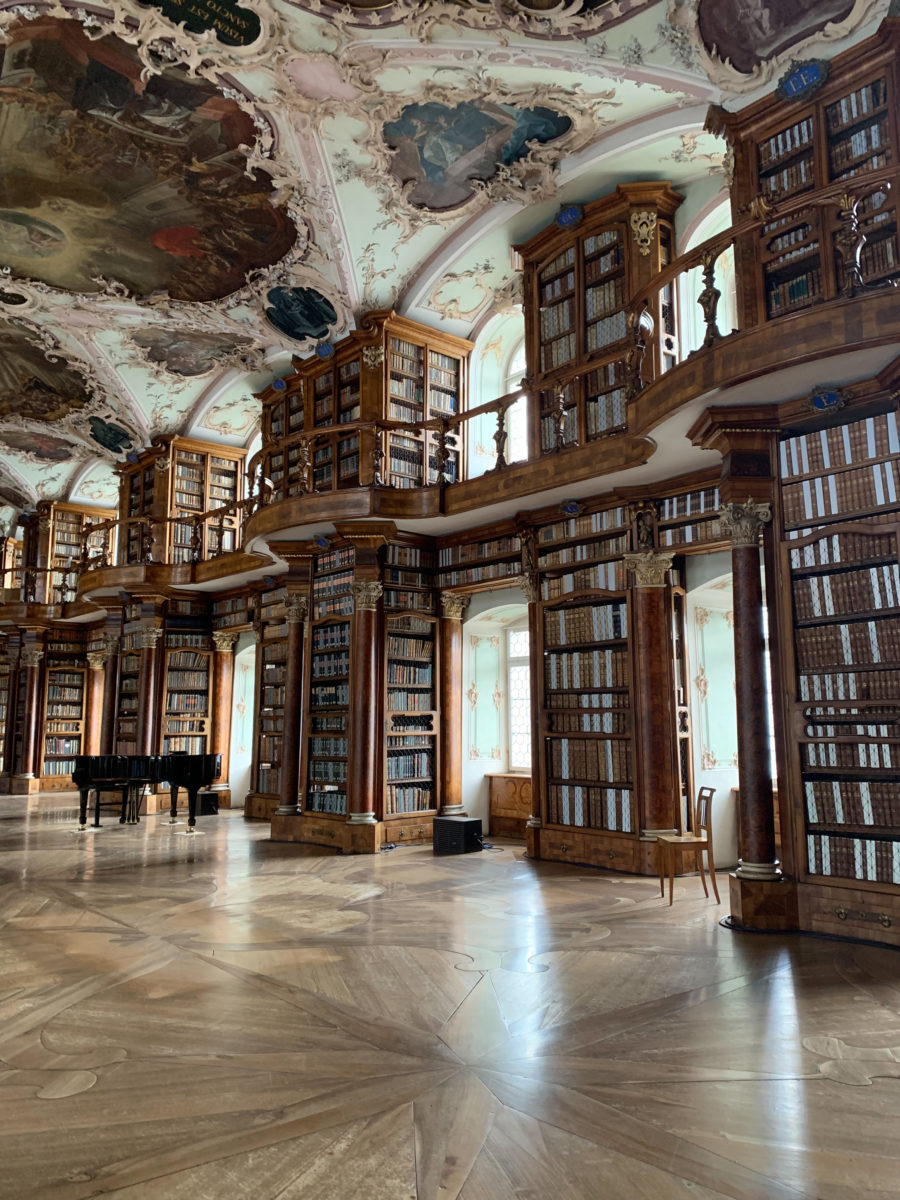

Come on, it’s worth a visit to the depths of the Swiss German part of Switzerland.
Einsiedeln Abbey’s Library
The library of Einsiedeln Abbey has a wealth of knowledge and content that dates back more than 1,000 years. I mention it in this specific article: Pilgrimage in Einsiedeln
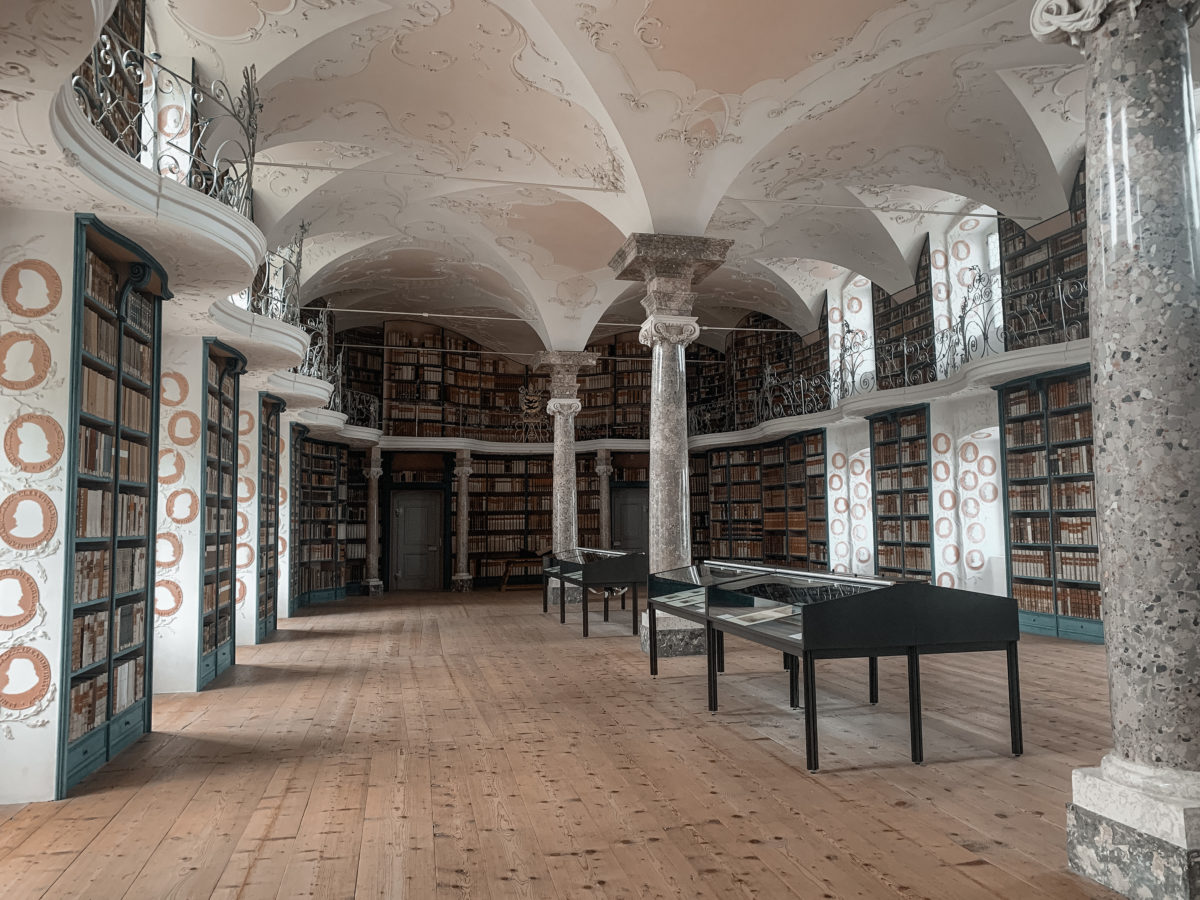
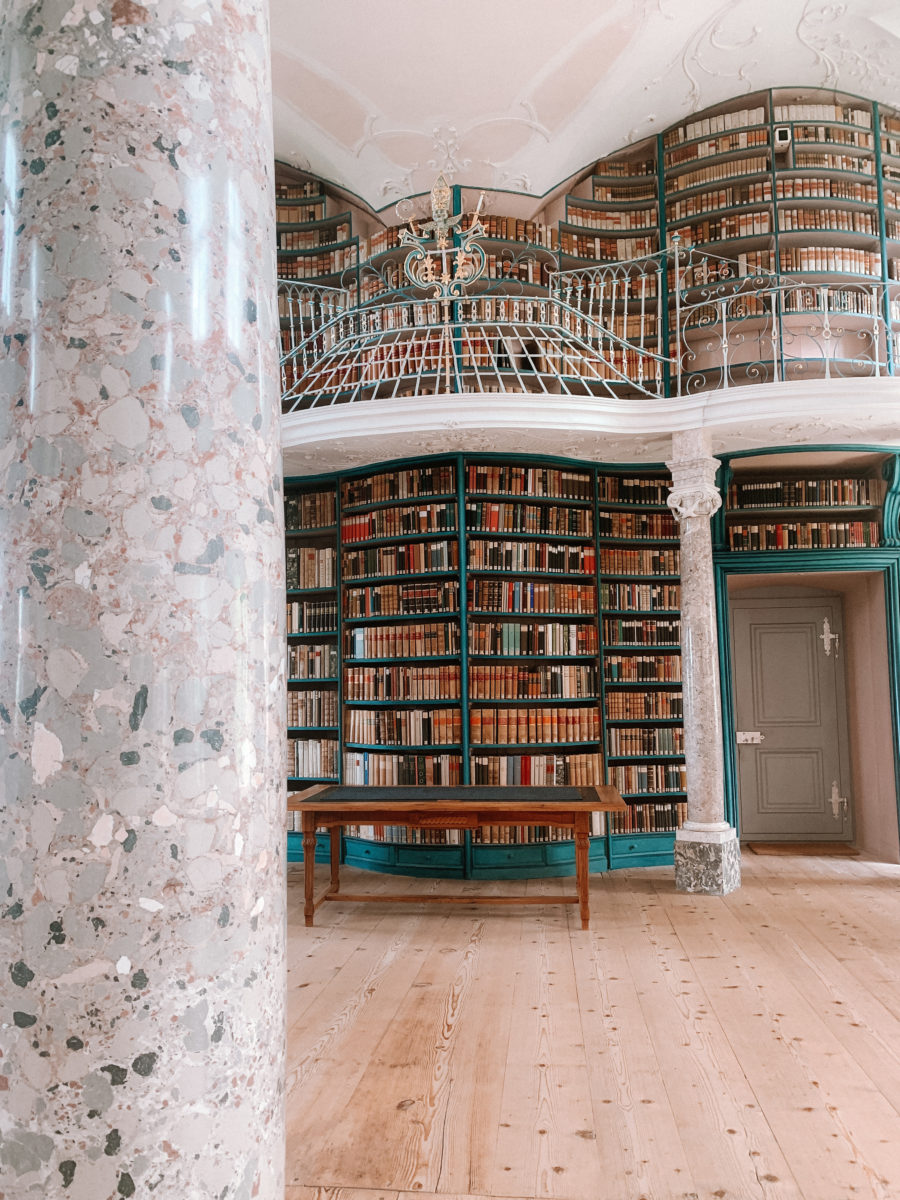
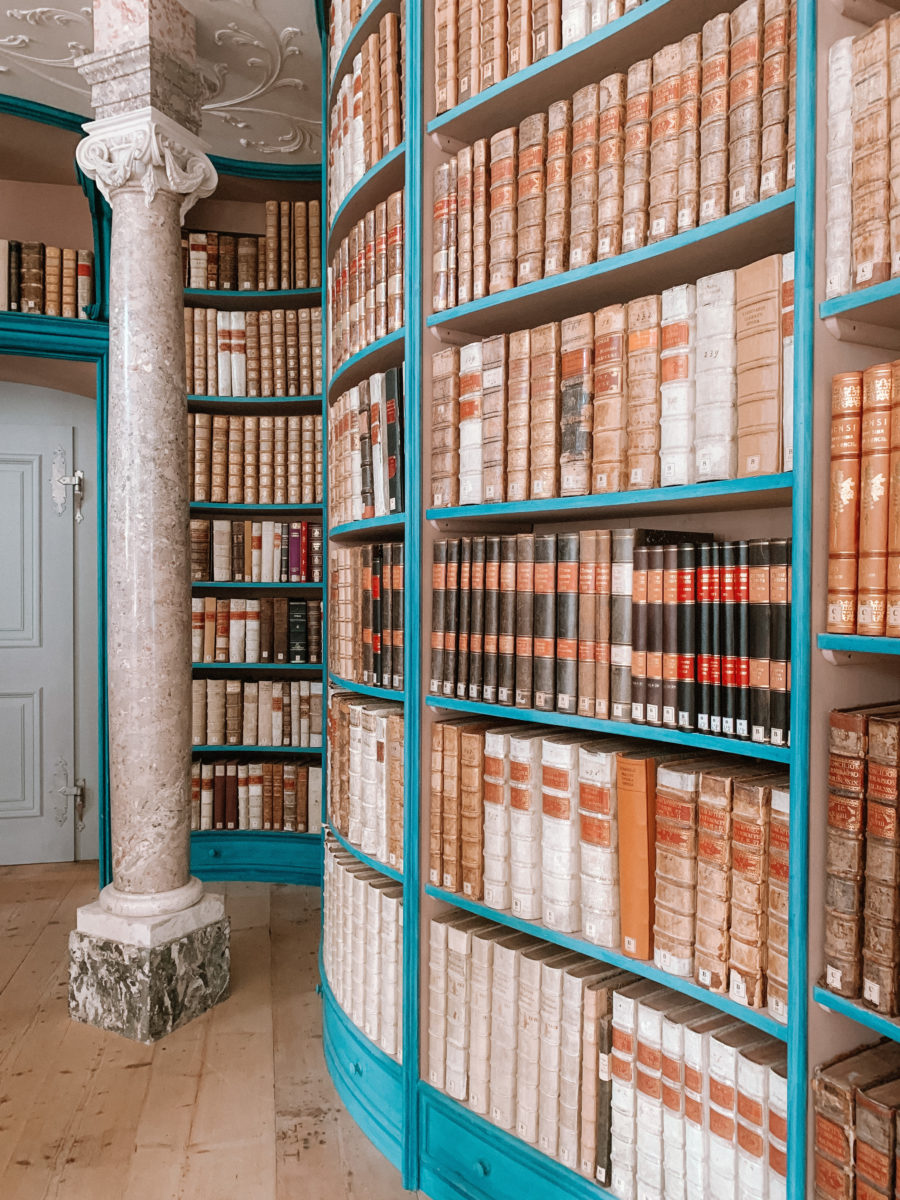
Royal Library of El Escorial
After 5 stays in the Spanish capital, I took the liberty of taking my sister to discover an important place in Spanish heritage: the royal site of San Lorenzo de la Escorial, located 50 kilometres northwest of the centre of Madrid.
This place, which has become a tourist attraction, can be reached by the C-3a suburban train from Sol or Chamartin. The station is only 1 kilometre from the site, but it is a nice walk to take before discovering a building with a massive and austere volume.
To discover the Royal Library of El Escorial, you must take part in a complete visit to the monastery. Basically, this consists of a 1-hour visit to the basilica, the royal palace, the seminary, the church and the necropolis of great sovereigns. But it’s as striking on the outside as it is royal on the inside, so it’s well worth the visit. It was also declared a UNESCO World Heritage Site in 1984.
The Royal Library is located in a large nave 54 metres long with a marble floor. I was immediately attracted by the carved wooden furniture decorating it. However, it is the vault and its magnificent frescoes which then bewitches the visitor. These represent the seven liberal arts: music, grammar, geometry, rhetoric, dialectics, arithmetic and astrology. The interest in astronomical discoveries at the time is reflected in a large globe.
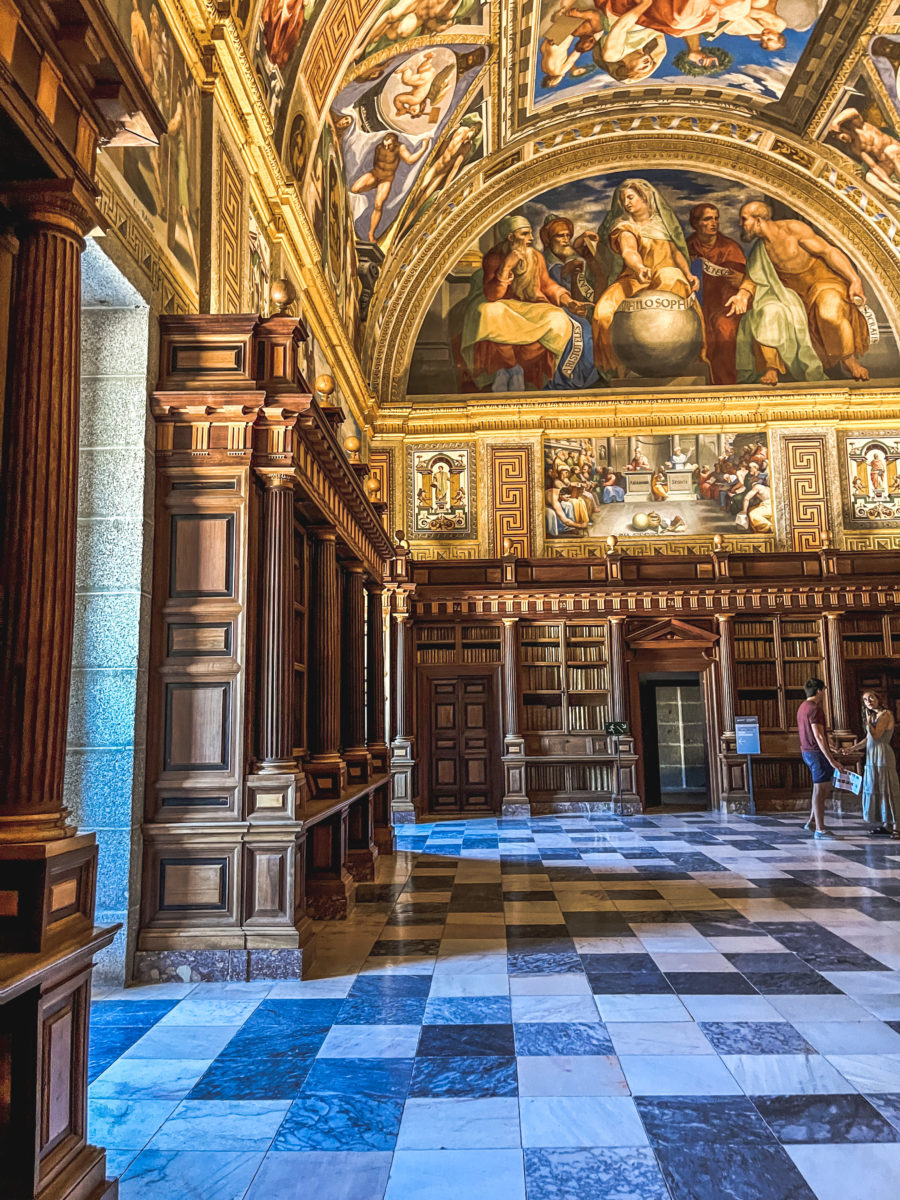
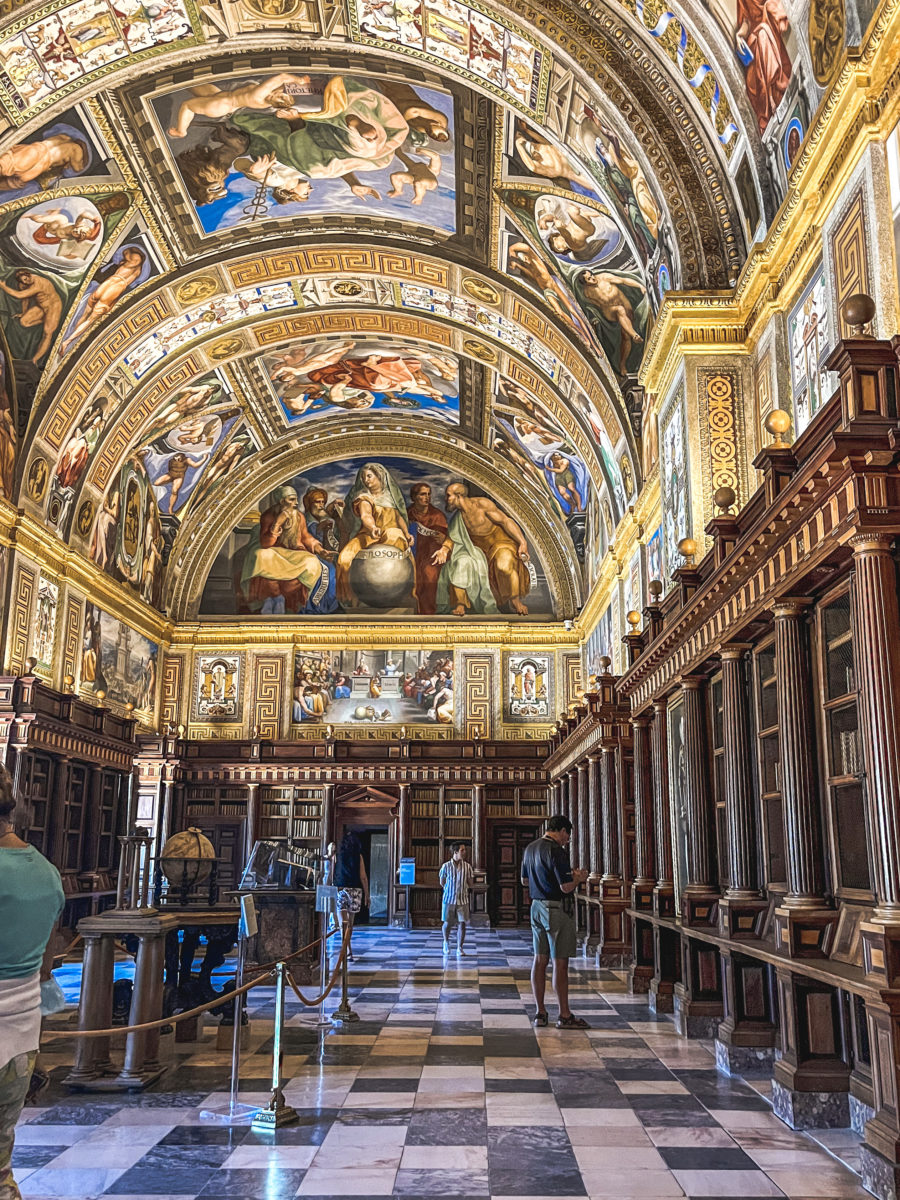
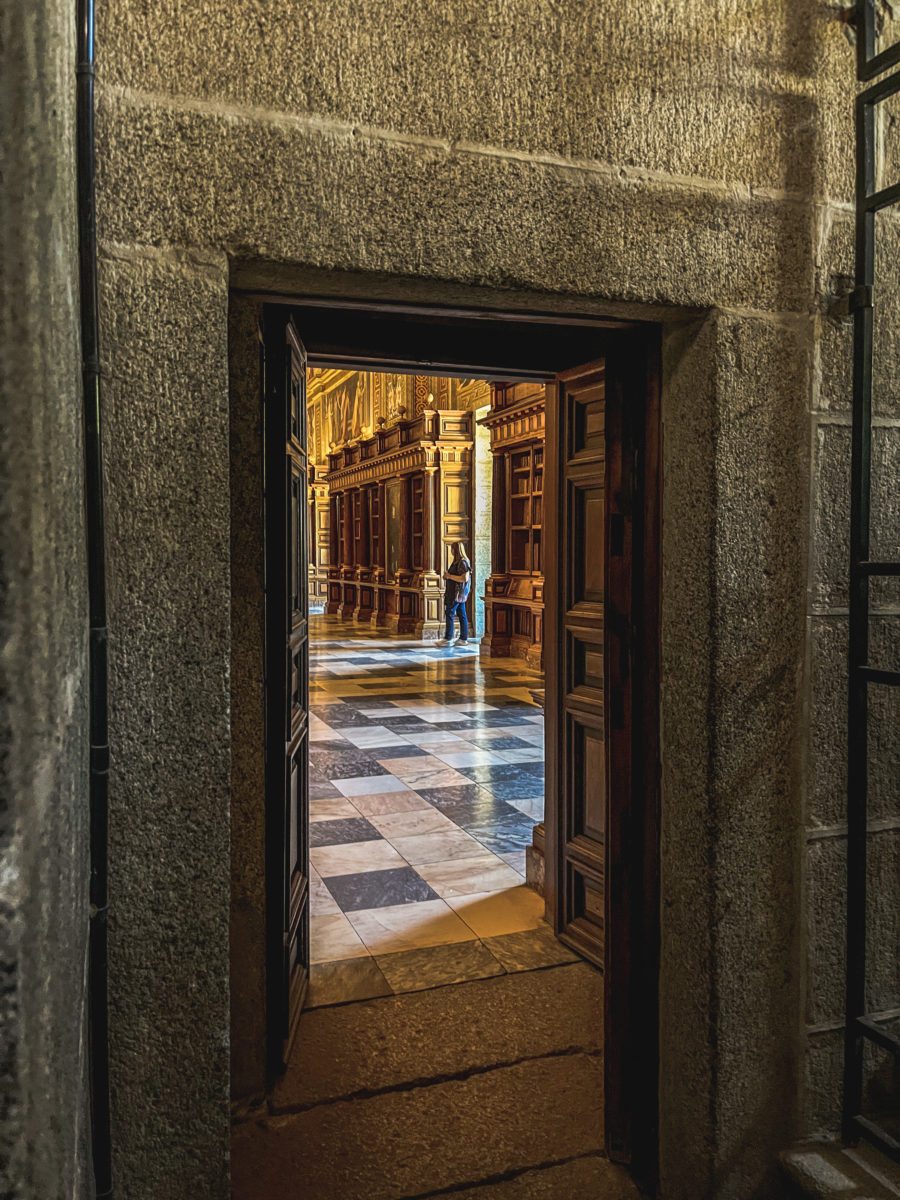
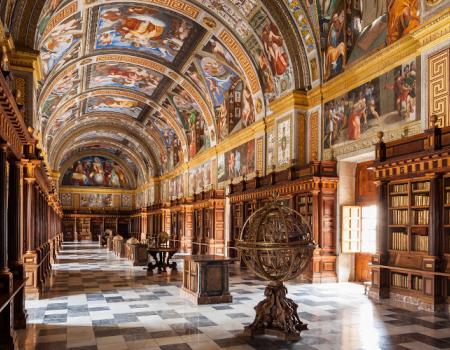
This library was built as a communication tool for the propaganda of the Spanish Empire (built by Philip II between 1563 and 1584). Indeed, thanks to this library and the palace city, the king wanted to show Spain’s mastery of the aforementioned fields of knowledge.
Spain deserved a library, or rather a showcase, for so much knowledge amassed over the centuries by great intellects. The result is absolutely magnificent and this sanctuary of ancient books still resides almost entirely centuries later (a fire in 1671 destroyed part of the collection).
Stockholm’s Public Library
It may not be the most beautiful library on this list, but the public library is an unusual place to visit in Stockholm. I already mentioned it in this article: The Must-Sees Of The Swedish Capital, Stockholm
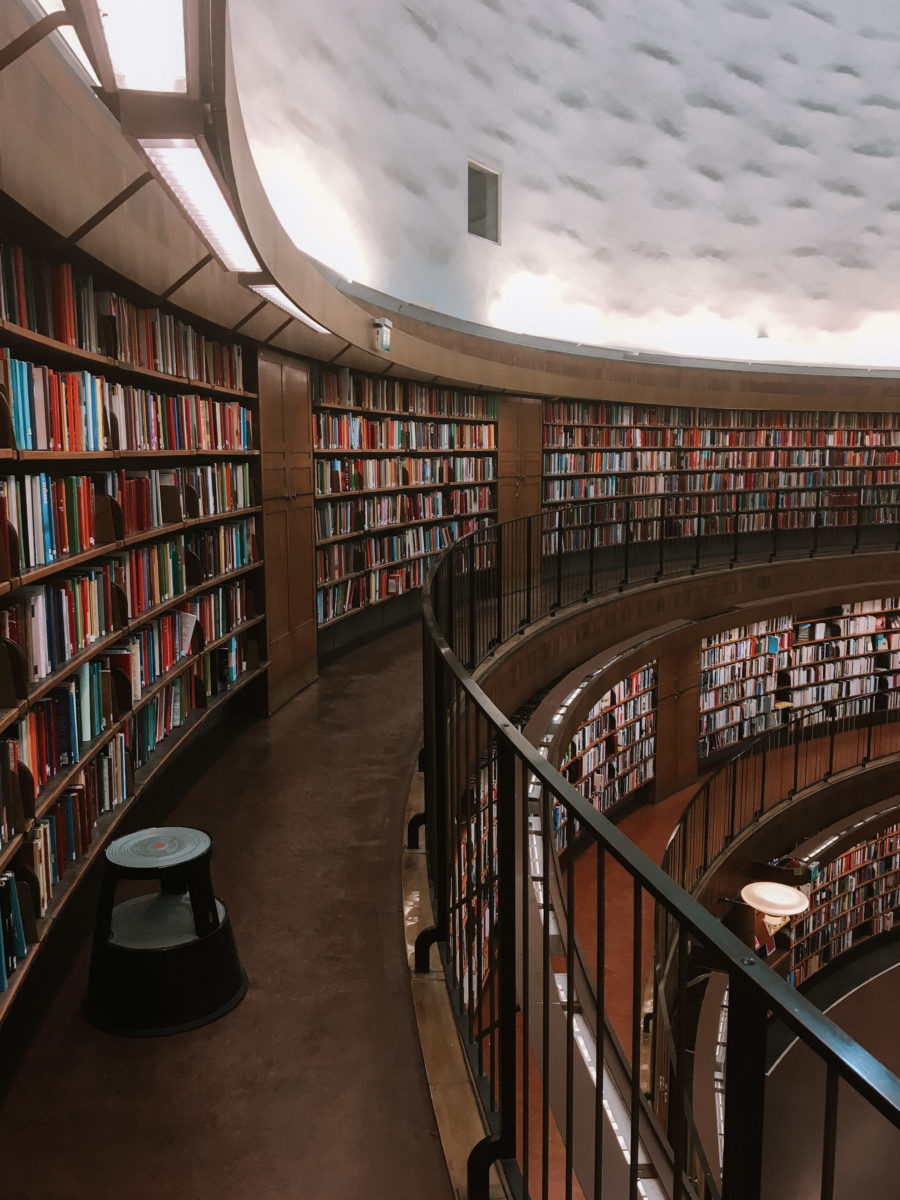
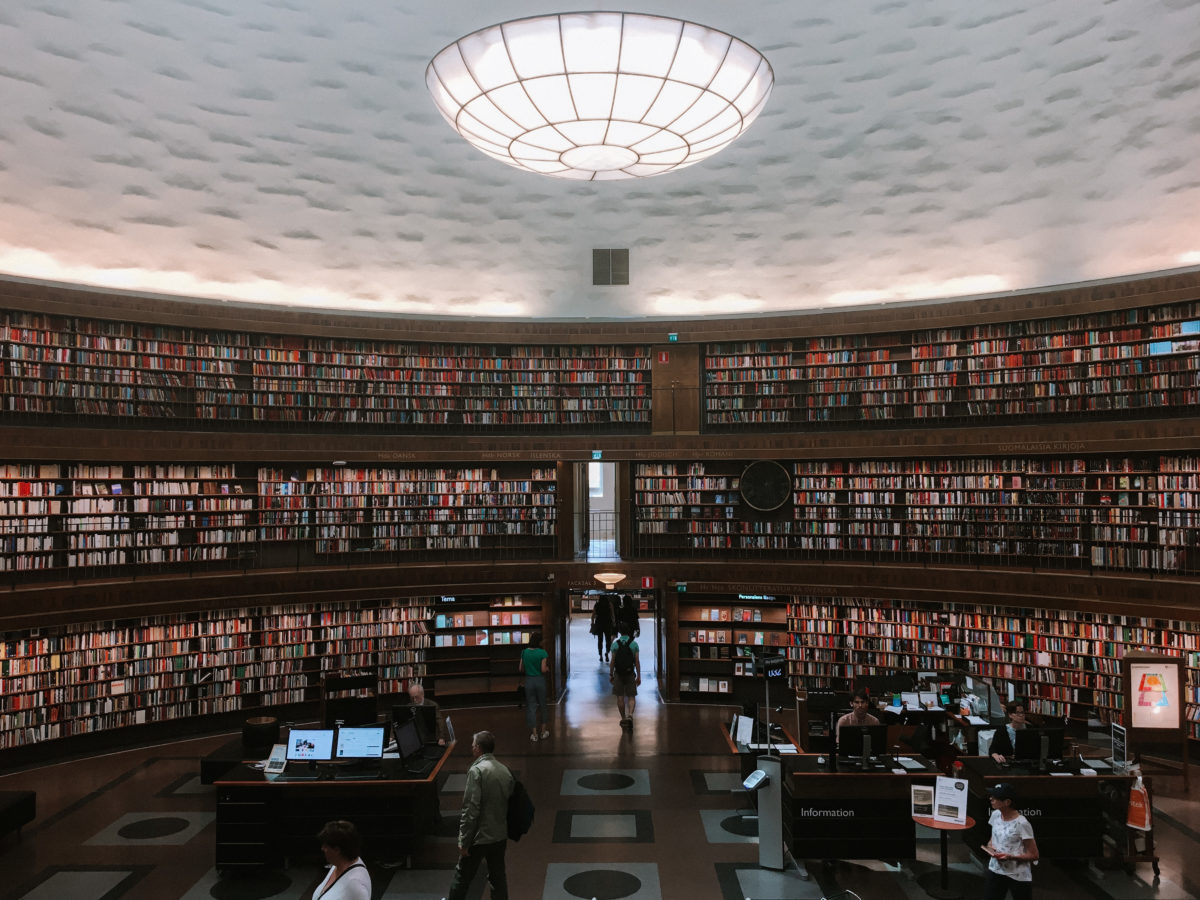
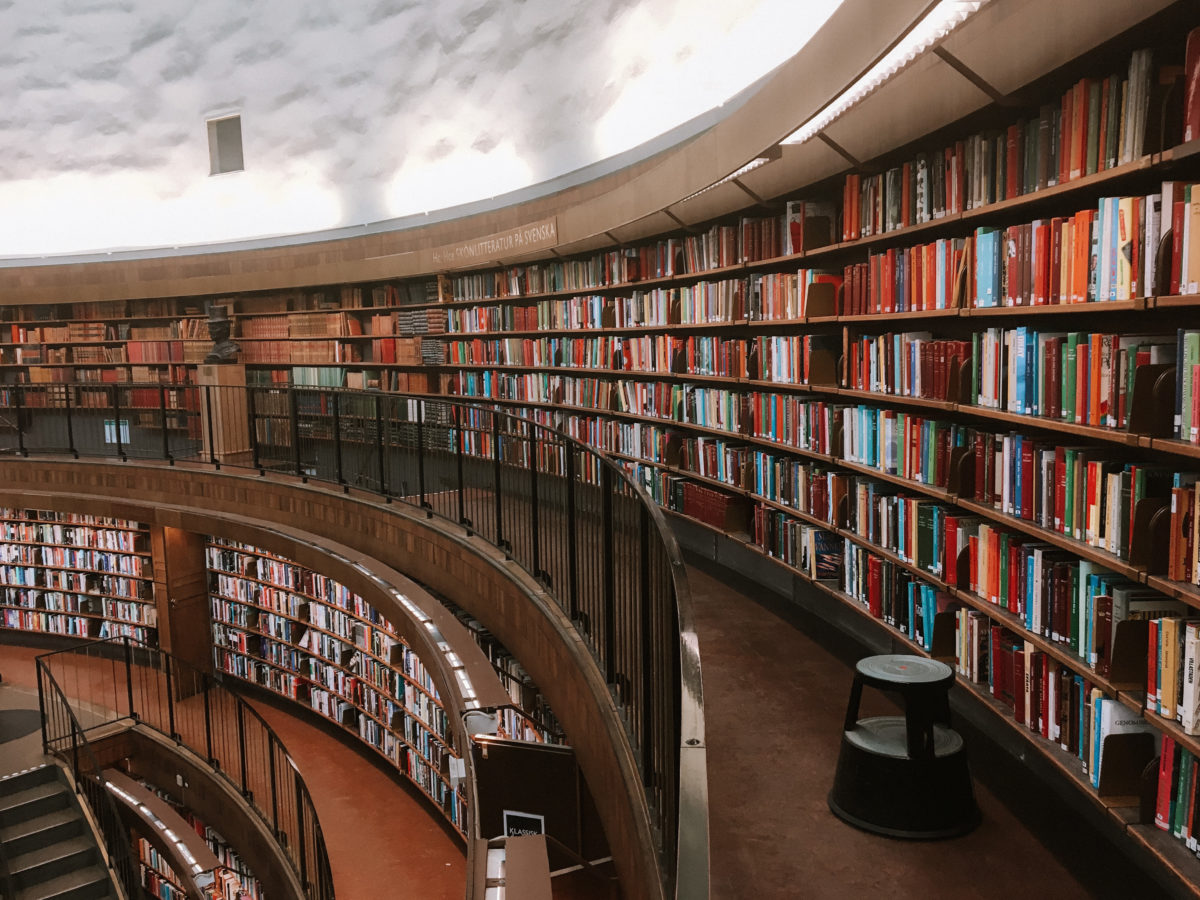
Its main asset is its circular shape, which gives the library an enormous cachet. It is not as old as its sister libraries, having been built in 1928.
National Library of Finland in Helsinki
It was while walking through Helsinki’s main square (Senaatintori) to discover the Lutheran Church (Tuomiokirkko), that I entered a sumptuous building located to the left of the Finnish capital’s emblem.
A neoclassical gem, its marble interior is absolutely magnificent, and I was overwhelmed by the beautiful dome in the main hall. In this main building, you will find something pleasing to the eye in every corner, such as the vaulted ceiling and beautiful drawings on the walls.

Today, the National Library of Finland is not only a library, but also a performance venue and a cultural destination where exhibitions and cultural events are held. Moreover, the main building of the National Library of Finland is one of the most renowned landmarks of early 19th century Empire architecture and is also important among public libraries of its time in Europe.
National Library of Kosovo in Prishtina
During my short stay in Prishtina, one building immediately caught my attention. I discovered the National Library of Kosovo. The reason why this library is on this list is not because of its visual wealth of old books or ancient wooden shelves containing centuries-old works, but because of its unusual architecture.
It is known for its unique history, and the style of the building designed by Yugoslav architect Andrija Mutnjaković, followed by controversies over its exterior appearance. The building is made of zenithal windows, with a total of 99 domes of different sizes and is entirely covered with a metal fishing net, which has its own special architectural symbolism. According to the architect of the National Library of Kosovo, it is supposed to represent a style mixing Byzantine and Islamic architectural forms.
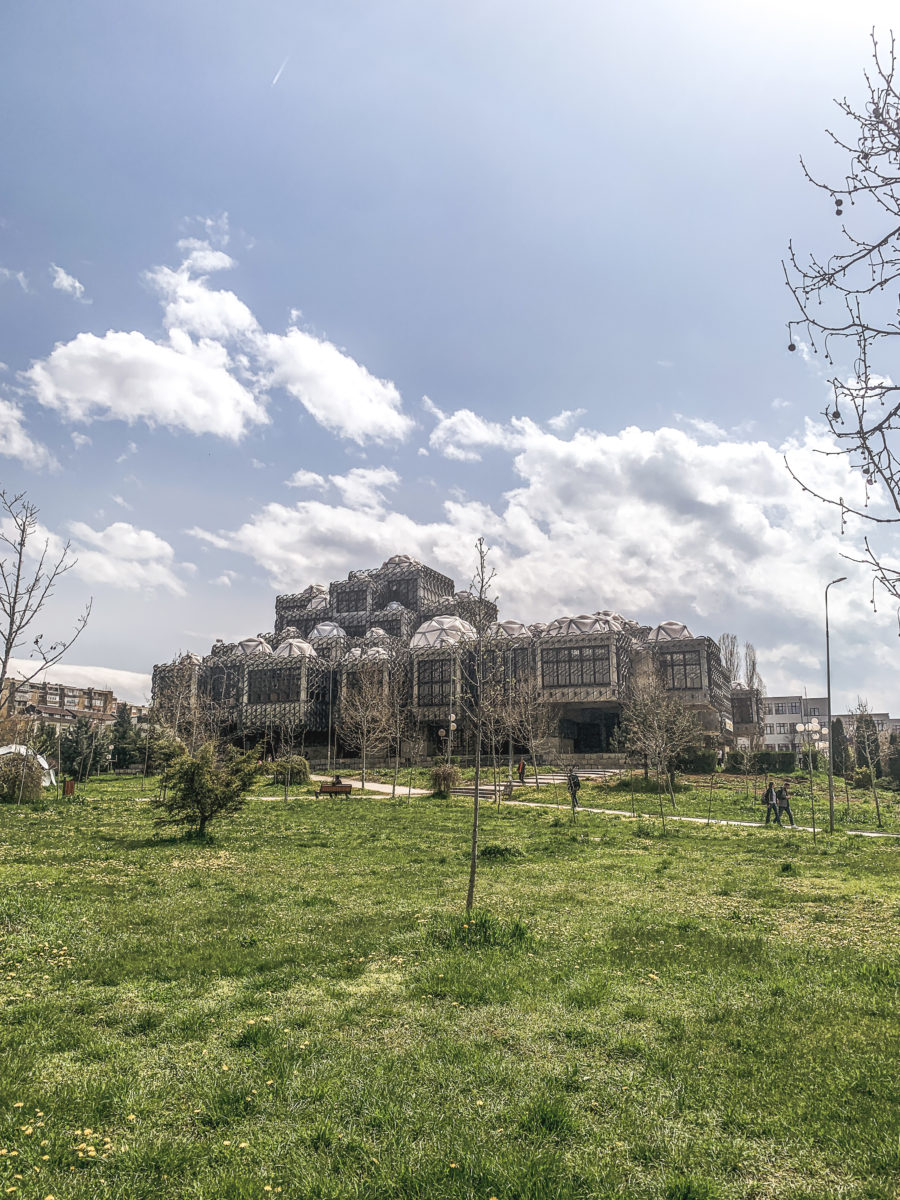
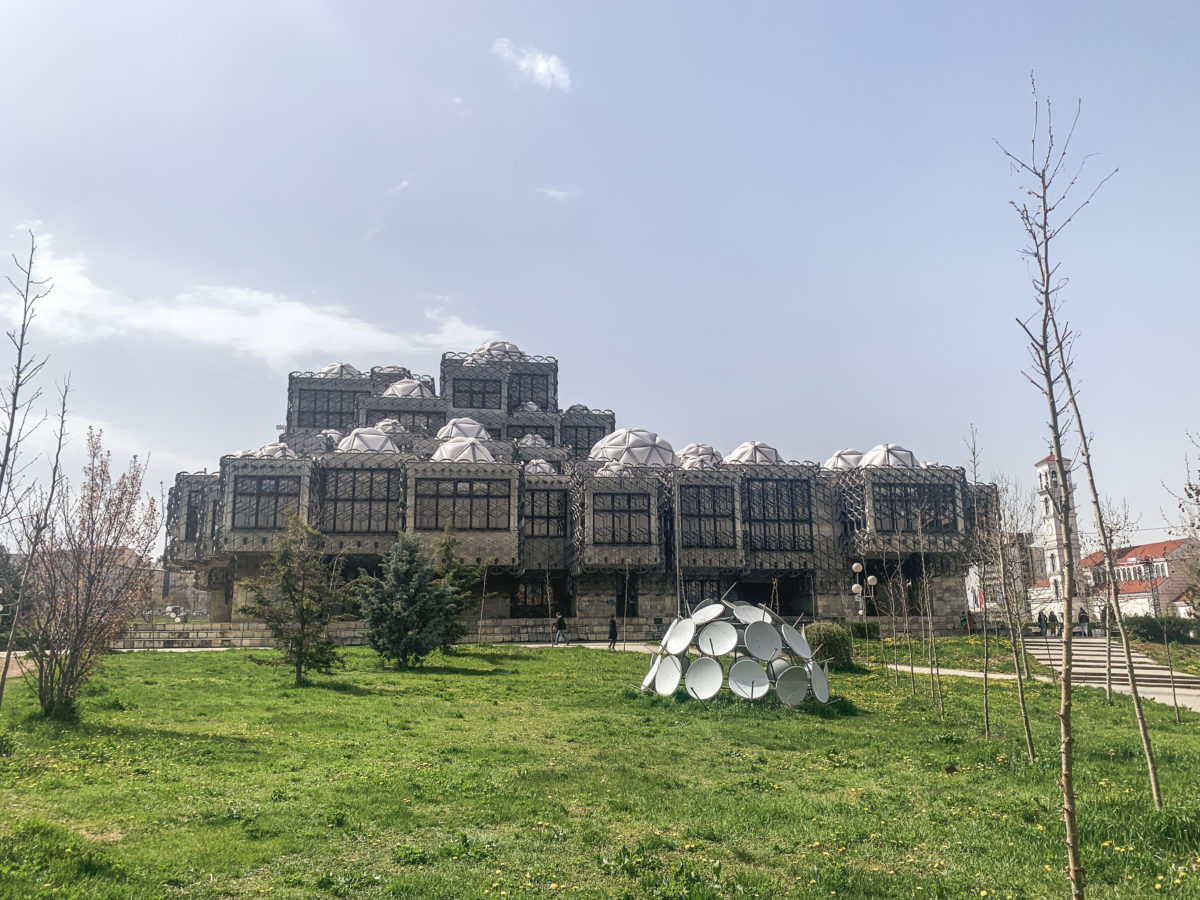
The purpose of the library is to collect, preserve, promote and make accessible the documentary and intellectual heritage of Kosovo. Its interior does not require a visit unless you are interested in various exhibitions or the archives of national newspapers, in order to understand in more detail the history and culture of the country.

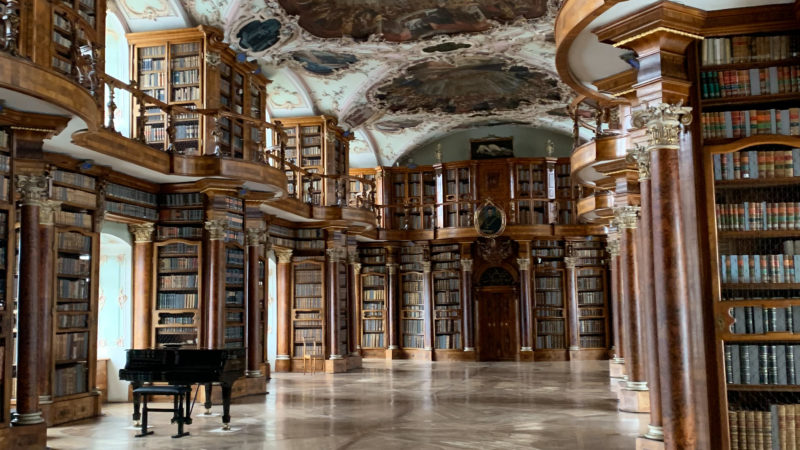






Such a great article! Now I wanna plan a visit to these places on my next trips! Love reading you!
Hi Berthe!
Thank you so much. Let me know if you have any questions about a trip to one of those beautiful libraries.
Cheers.